Hampi, a UNESCO World Heritage Site[1], is a fascinating destination known for its ancient temples, historic monuments, and rich cultural heritage. This guide to places to visit in Hampi will help you explore must-see attractions, from stunning architectural wonders to hidden gems, offering a glimpse into its glorious past. Get ready to experience its spiritual significance, captivating legends, and breathtaking landscapes that make Hampi a truly unforgettable place to visit.
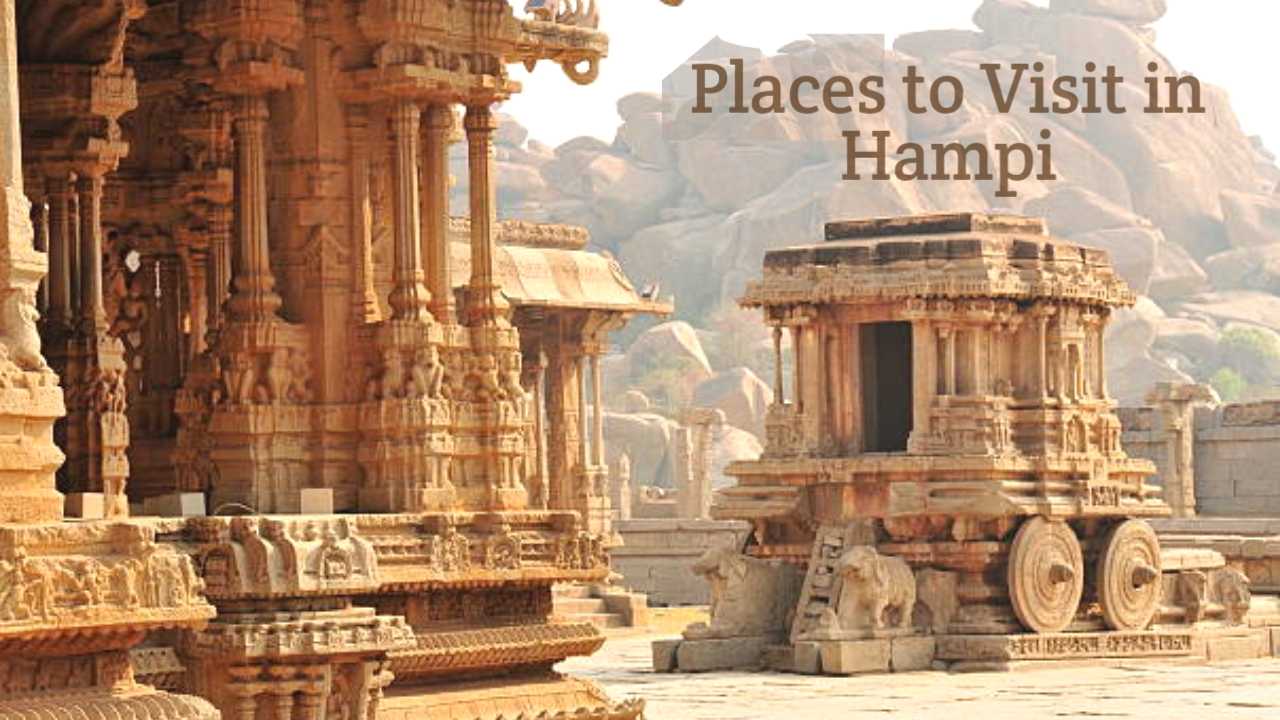
Table of Contents:-
- Virupaksha Temple
- Vittala Temple
- Zenana Enclosure
- Royal Enclosure
- Anjanadri Hill
- Lotus Mahal
- Elephant Stables
- Hazara Rama Temple
- Queen’s Bath
- Underground Chamber
- Stepped Tank
- Mahanavami Dibba
- Hemakuta Hill
- Kadalekalu Ganesha
- Sasivekalu Ganesha
- Lakshmi Narasimha Statue
- Badavilinga Temple
- Krishna Temple
- Hampi Bazaar
- Monolithic Bull
- Matanga Hill
- Achyutaraya Temple
- Chakratirtha
- Yantrodharaka Hanuman Temple
- Sugriva’s Cave
- Underground Shiva Temple
- Koti Linga
- Malyavanta Raghunatha Temple
- King’s Balance
- Narasimha Temple
- Ananthashayana Temple
- Vishnu Temple
- Hastagiri Ranganatha Temple
- Uddana Veerabhadra Temple
- Purandaradasa Mantapa
- Chandrashekhara Temple
- Bhima’s Gateway
- Ganagitti Jaina Temple
- Madhava (Ranga) Temple
- Varaha Temple
- Chandikeshwara Temple
- Vishnu Dashavatara Bas-relief Sculptures
- Double-Storeyed Mandapa
Hampi attracts tourists with its rich history, stunning architecture, and breathtaking landscapes. As a UNESCO World Heritage Site, it showcases the grandeur of the Vijayanagara Empire through magnificent temples, intricate carvings, and vast ruins. The scenic beauty of ancient boulders, lush banana plantations, and the peaceful Tungabhadra River appeals to nature lovers and adventure seekers. Additionally, Hampi’s lively markets, vibrant festivals, and cultural charm make it a popular destination for travelers seeking a unique and immersive experience.
Virupaksha Temple
The Virupaksha Temple in Hampi, India, is an ancient temple dedicated to Lord Shiva, built around the 7th century AD. It is one of the oldest temples still in use today, attracting visitors with its stunning architecture and intricate carvings. Inside, the peaceful atmosphere offers a deep spiritual experience. Must-see attractions within the temple include the Main Entrance Tower, Ranga Mantapa, Lakshmi the Elephant, Ceiling Paintings, an Inverted Gopura, Lord Virupaksha (the main deity), Manmatha Honda, and beautifully carved pillars, making it a remarkable site to explore. Read More »
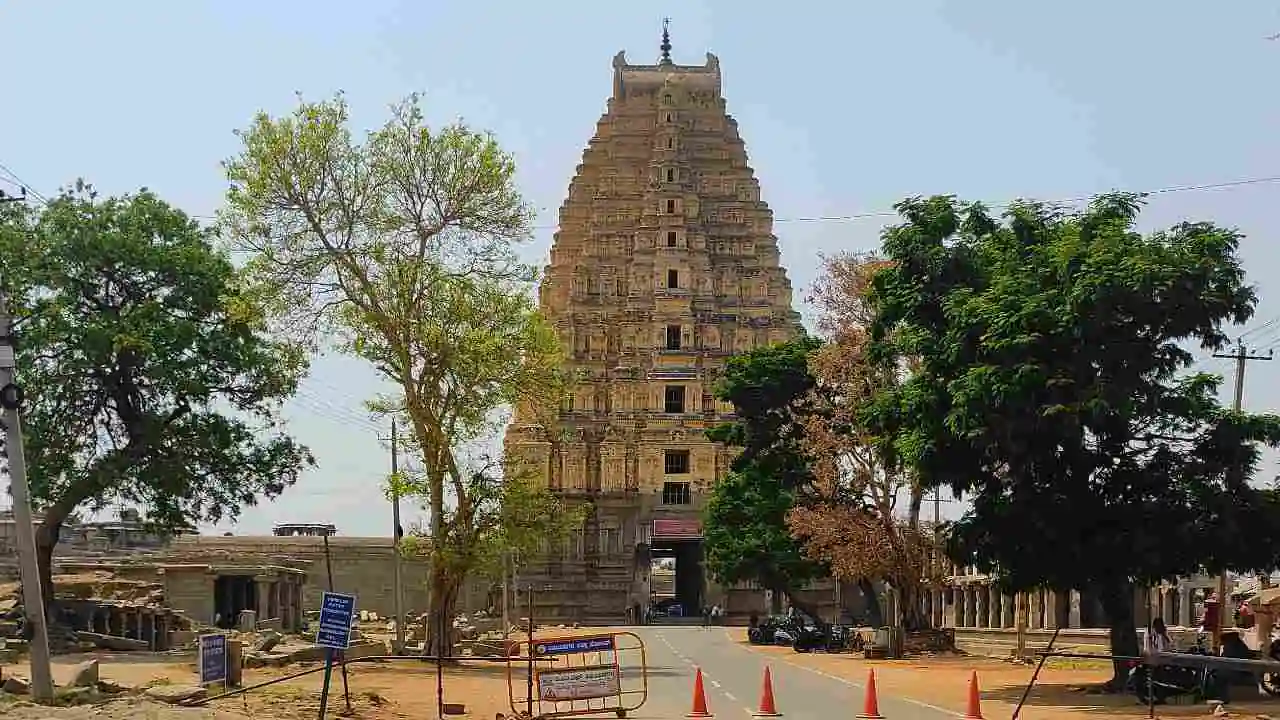
Vittala Temple
The Vittala Temple in Hampi, India, is a remarkable example of Vijayanagara architecture, built during the 15th and 16th centuries. Dedicated to Lord Vittala, an incarnation of Lord Vishnu, the temple is adorned with intricate carvings and breathtaking stonework. Its most iconic feature is the massive Stone Chariot, a unique structure that resembles a chariot carved entirely from stone. The temple is also famous for its Musical Pillars, which produce musical tones when tapped. Read More »
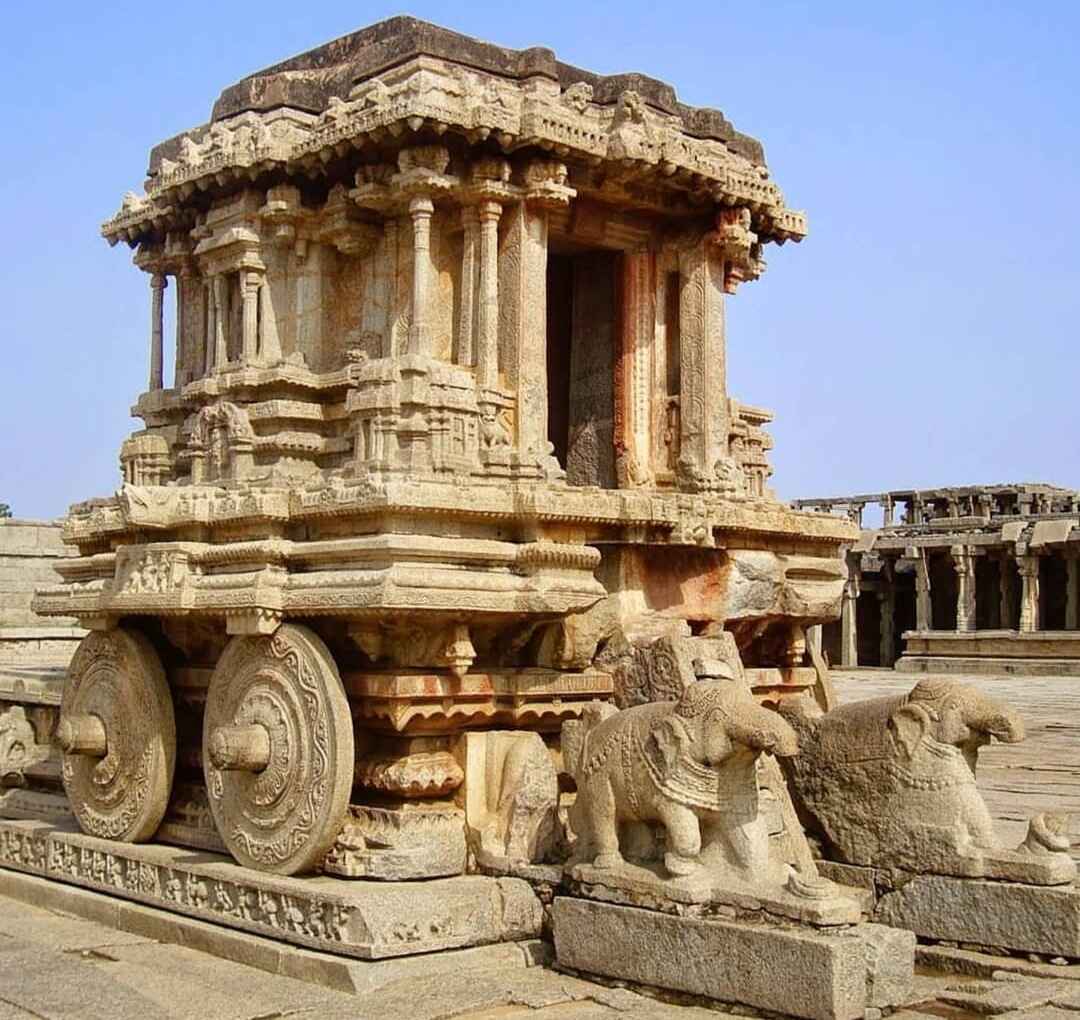
Zenana Enclosure
The Zenana Enclosure in Hampi is a fascinating historical site that once served as the private quarters for the royal women of the Vijayanagara Empire. Enclosed by fortified walls and guarded entrances, it offers a glimpse into the royal lifestyle and architectural brilliance of the era. Key attractions within the enclosure include the Lotus Mahal, Watch Towers, Treasury Building, Elephant’s Stable, Basement of the Queen’s Palace, Jal Mahal, and Guards’ House. Visitors can also explore sculpture galleries curated by the Archaeological Survey of India, featuring artifacts and antiquities unearthed from Hampi and surrounding areas, making it a must-visit destination for history enthusiasts. Read More »
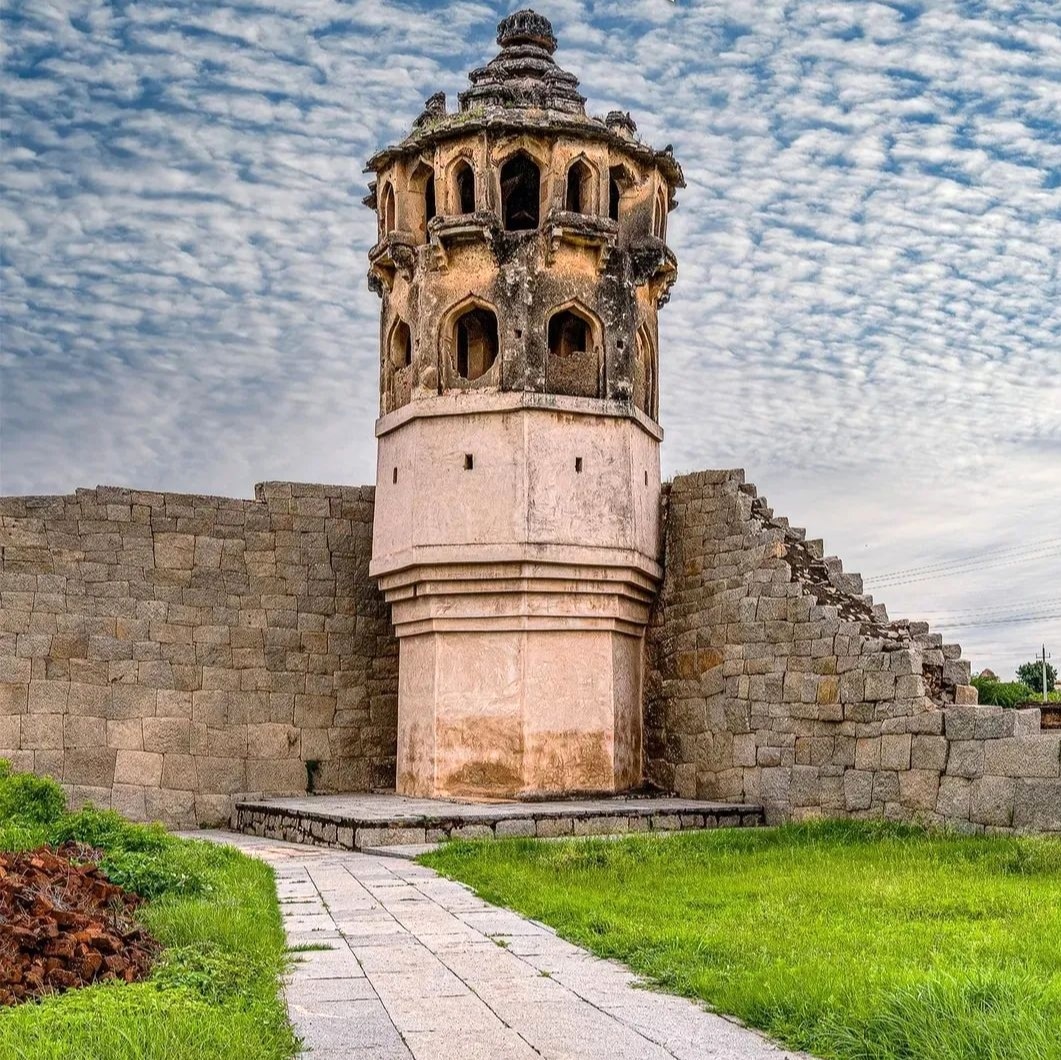
Royal Enclosure
The Royal Enclosure in Hampi is a vast complex that once served as the seat of power for the Vijayanagara Empire between the 14th and 16th centuries. Surrounded by high walls and fortified gates, this area housed palaces, administrative buildings, and temples, showcasing the grandeur of the empire, though now in ruins. Visitors can explore key attractions such as the King’s Audience Hall (Durbar Hall), Mahanavami Dibba, Stepped Tank (Black Stone Pushkarani), Queen’s Bath, Underground Chamber, Watchtowers, Royal Palace Basements, Noblemen’s Quarters, and Massive Stone Doors, offering a glimpse into the empire’s rich history, governance, and daily life. Read More »
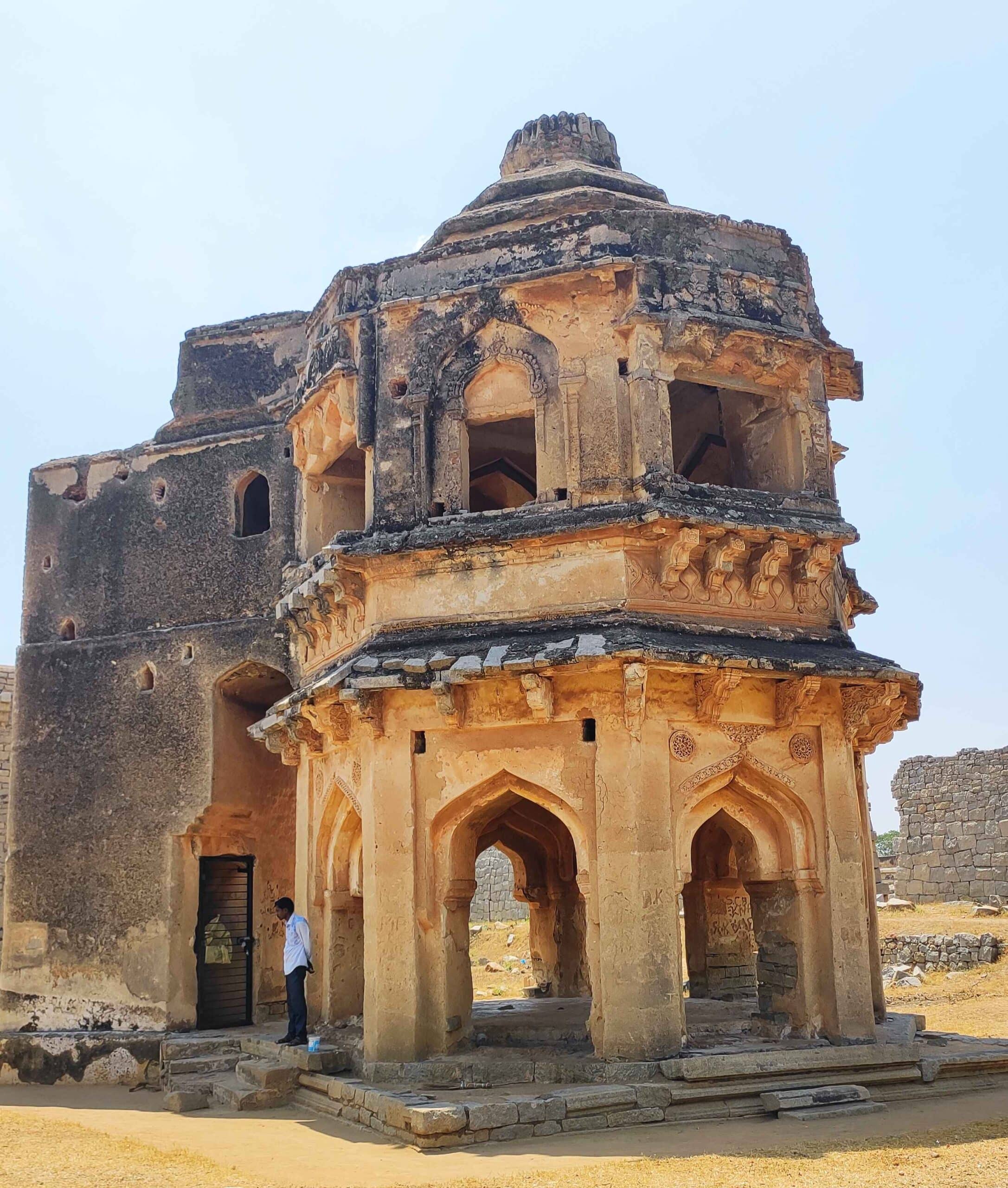
Anjanadri Hill
Anjanadri Hill, near Hampi in Karnataka, is a sacred site believed to be the birthplace of Lord Hanuman. Named after his mother, Anjana, the hill is an important pilgrimage destination, drawing devotees seeking blessings and spiritual connection. A trek to the top rewards visitors with breathtaking views of the Tungabhadra River and the historic ruins of Hampi. At the summit, the Hanuman Temple Complex stands as a place of worship and devotion. Other must-see attractions include the Floating Stone, Panoramic Views, Sunrise and Sunset Points, Groups of Monkeys, and the Natural Beauty that makes Anjanadri Hill a serene and inspiring destination. Read More »
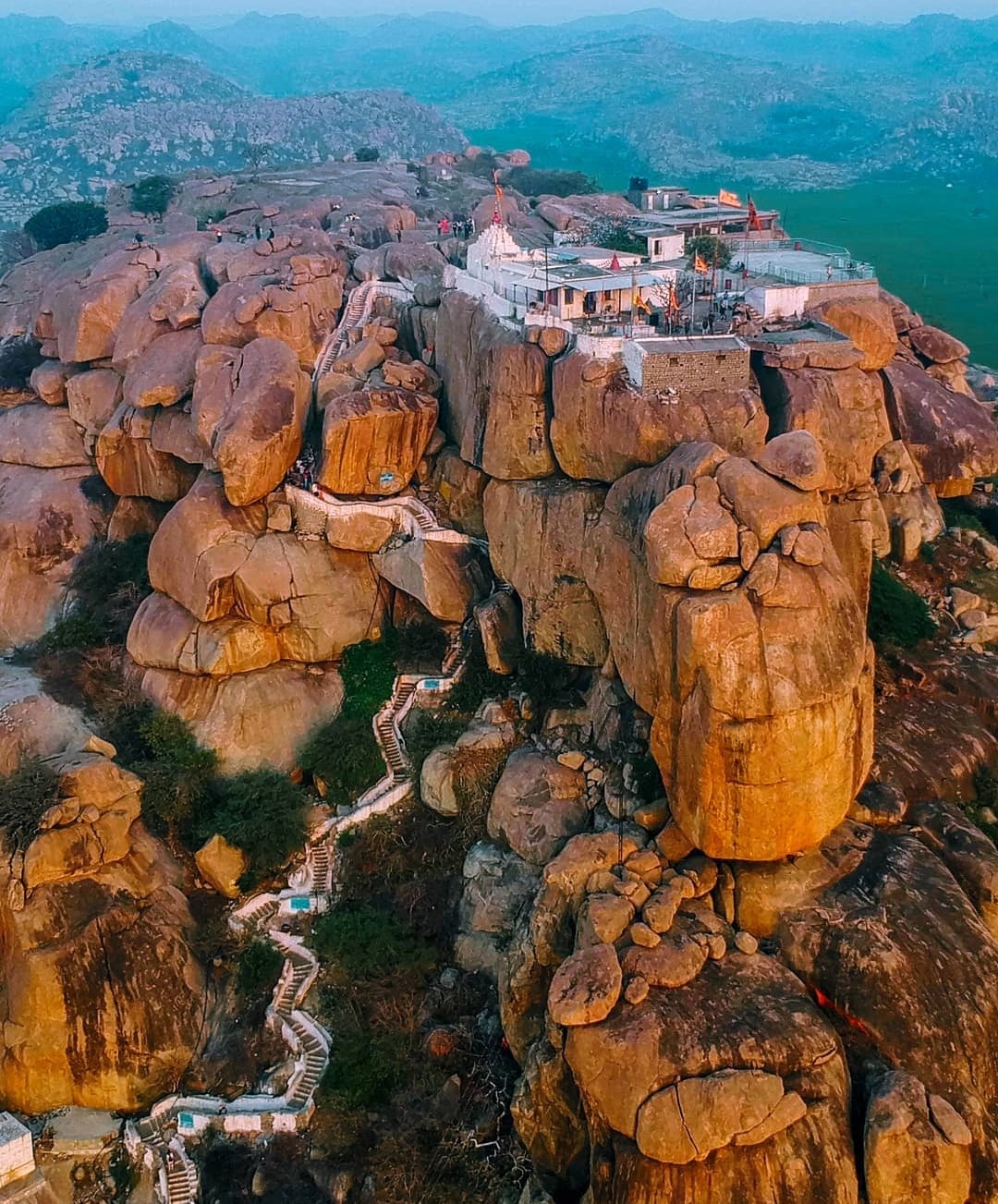
Lotus Mahal
The Lotus Mahal, also known as Kamal Mahal and Chitrangi Mahal, is a beautiful two-story pavilion in Hampi, designed to resemble a lotus bud. With delicately carved arches and domes, it showcases a stunning fusion of Hindu and Islamic architectural styles. The open pavilions and balconies allowed royal women to enjoy the breeze while maintaining privacy. The upper floor features intricately carved arches, offering breathtaking views of the surroundings. Must-see attractions include its graceful arched windows, delicate floral motifs, exquisite craftsmanship, and nearby structures such as a sealed ancient well and a large fort wall, adding to its historical charm. Read More »
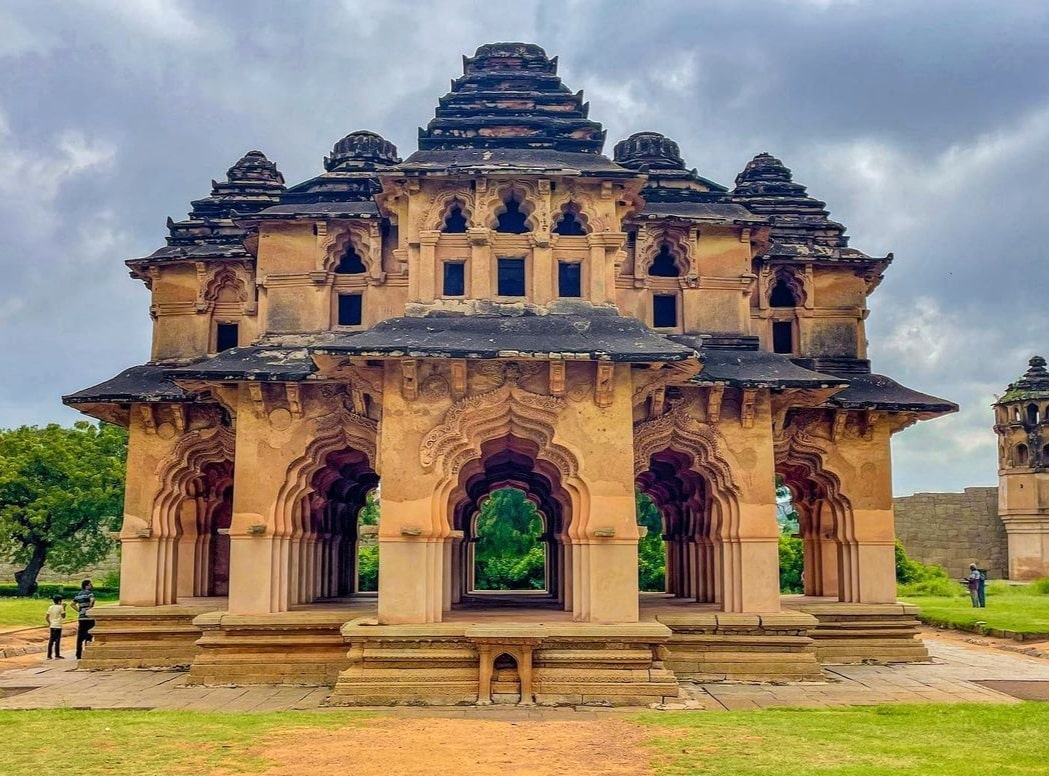
Elephant Stables
The Elephant Stables in Hampi, with its row of eleven arched doorways, once housed the royal elephants of the Vijayanagara Empire, symbolizing strength and loyalty. Built in a unique blend of Dravidian, Hindu, and Islamic architectural styles, the structure features ornately carved pillars, spacious courtyards, and intricate windows. While some believe it was solely used as stables, others argue it may have served as a palace secretariat. Regardless of its purpose, the Elephant Stables stand as a remarkable testament to the grandeur of a bygone era. Read More »
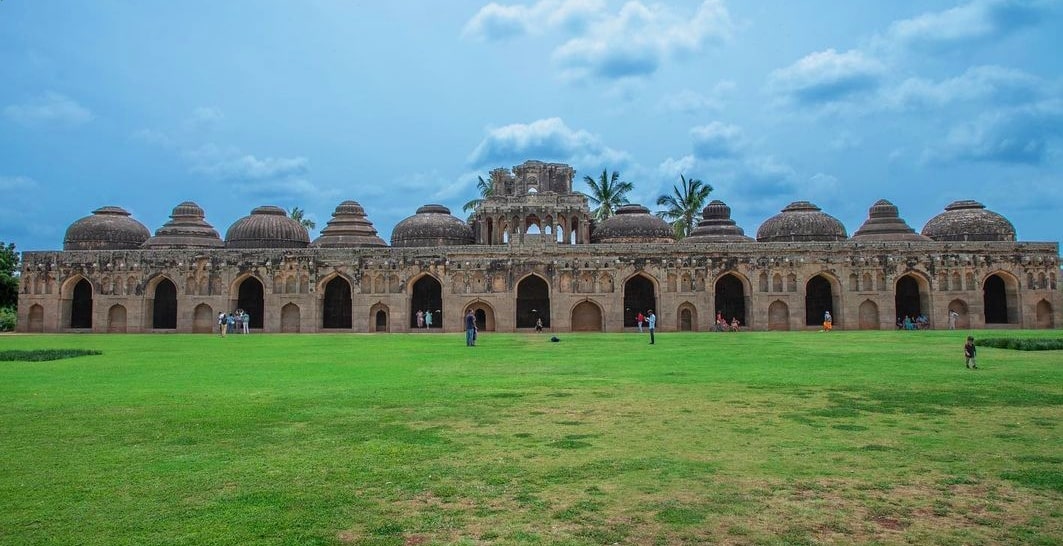
Hazara Rama Temple
The Hazara Rama Temple in Hampi, dating back to the 15th century, is a significant historical and religious site dedicated to Lord Rama. Known for its unique architecture, the temple’s walls are adorned with intricate carvings depicting scenes from the Ramayana and parts of the Bhagavad Gita, giving it the name “Hazara Rama,” meaning “Thousand Rama.” Believed to have been a private sanctuary for Vijayanagara kings, the temple is surrounded by lush greenery, offering a serene and spiritual ambiance. Read More »
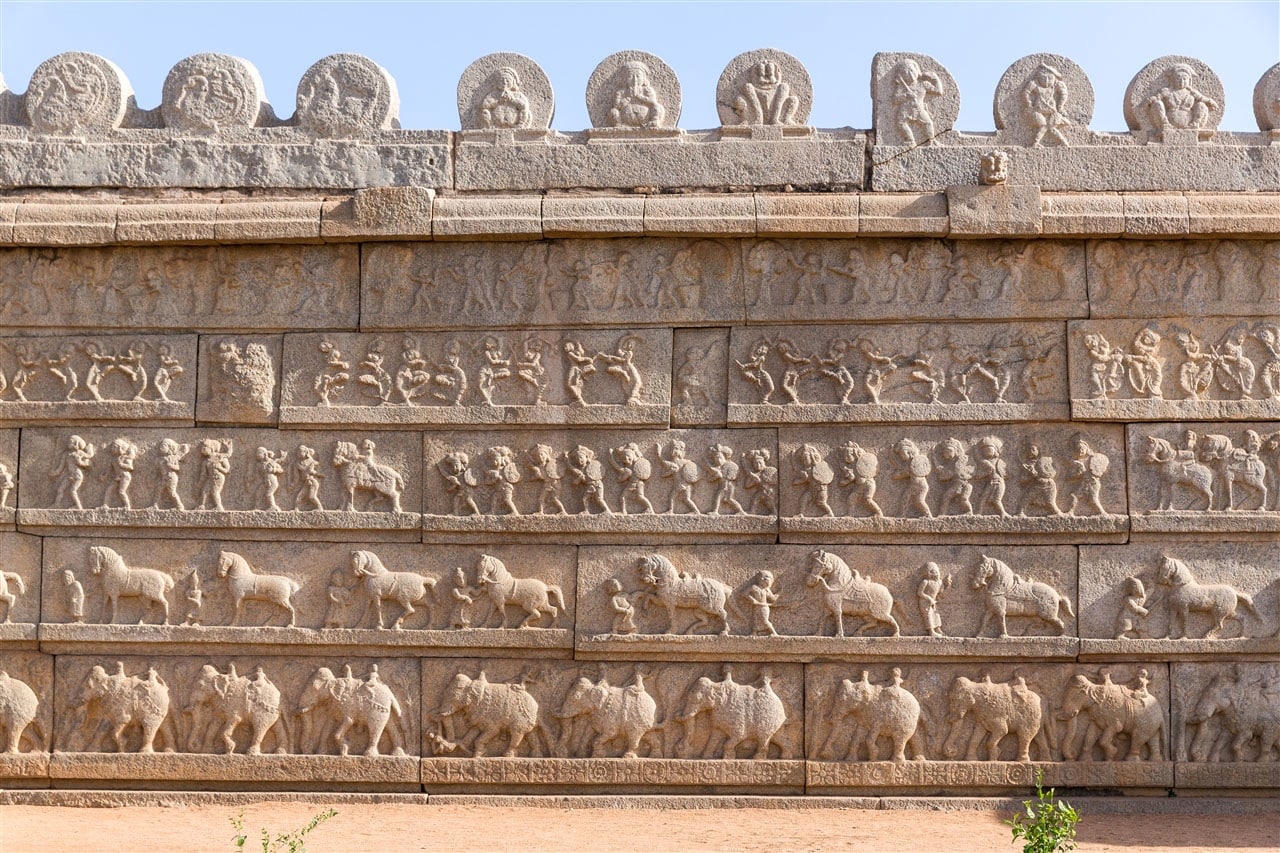
Queen’s Bath
The Queen’s Bath in Hampi is a fascinating historical site that offers a glimpse into the opulent lifestyle of the Vijayanagara Empire. Located within the Royal Centre, this ancient bathing complex, dating back to the 14th to 16th centuries, is believed to have served as a private retreat for royal women. While its exact purpose remains debated, its elaborate architecture and intricate design showcase the grandeur of the Vijayanagara court. Read More »
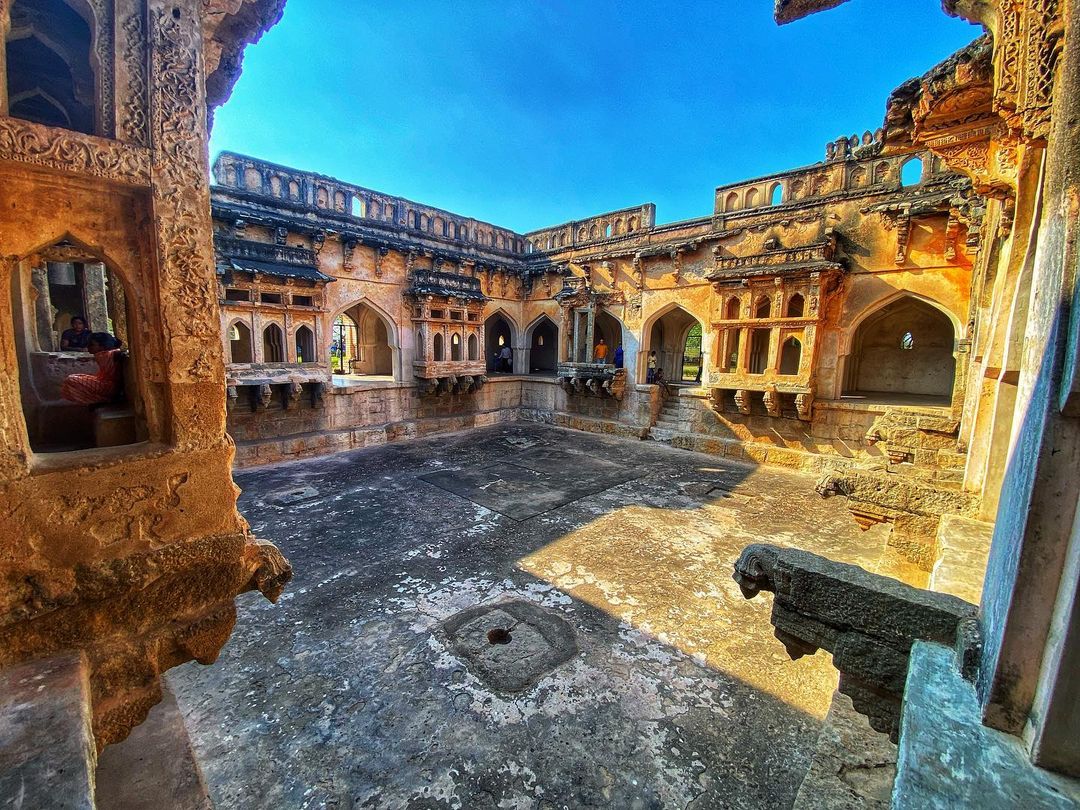
Underground Chamber
The Underground Chamber in Hampi is a must-see attraction that offers a fascinating glimpse into the architectural marvels of the Vijayanagara Empire. Located within the Royal Enclosure, this subterranean structure is accessible by a flight of steps and is believed to have served as a secret meeting place for the royal family or a treasury. As you descend into its cool, dimly lit corridors, the sense of mystery deepens. The chamber’s walls, built from black stone and green quartz, highlight the engineering brilliance of the era. Read More »
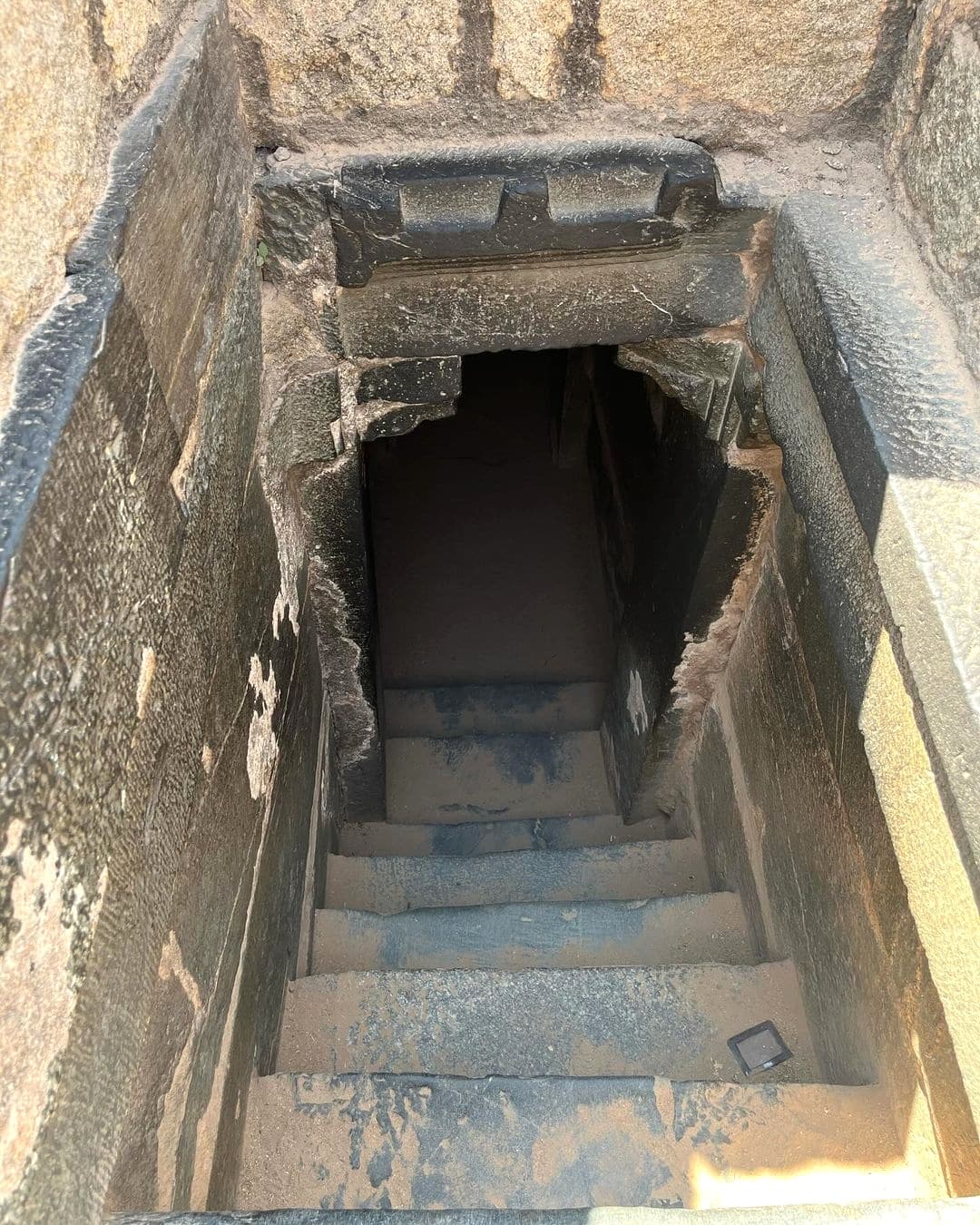
Stepped Tank
Near the Royal Enclosure in Hampi, the Stepped Tank (Black Stone Pushkarani) stands as a remarkable example of the engineering brilliance of the Vijayanagara Empire. This impressive water reservoir served both functional and aesthetic purposes, with its geometrically designed steps providing easy access to water while creating a visually stunning spectacle. The tank highlights the empire’s advanced water management techniques and architectural ingenuity. Read More »
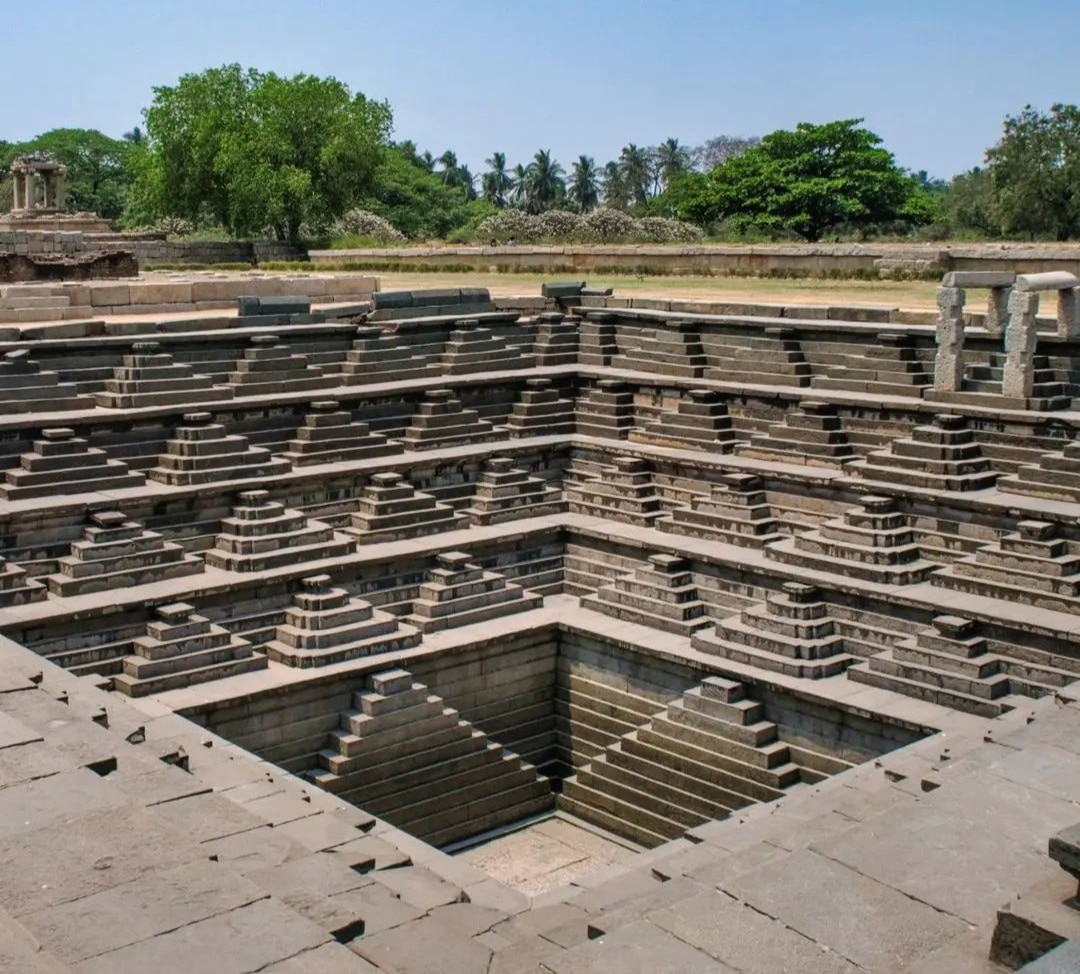
Mahanavami Dibba
The Mahanavami Dibba, also known as the Dasara Dibba, Great Platform, or Throne Platform, is one of the most iconic structures within the royal precinct of the Vijayanagara Empire. Located in the heart of the Royal Centre, this grand platform served as the main stage for the elaborate Mahanavami festival celebrations, where the king symbolically displayed power and authority. From this elevated vantage point, the rulers observed processions, performances, and religious ceremonies, all set against the backdrop of awe-inspiring landscapes. Read More »
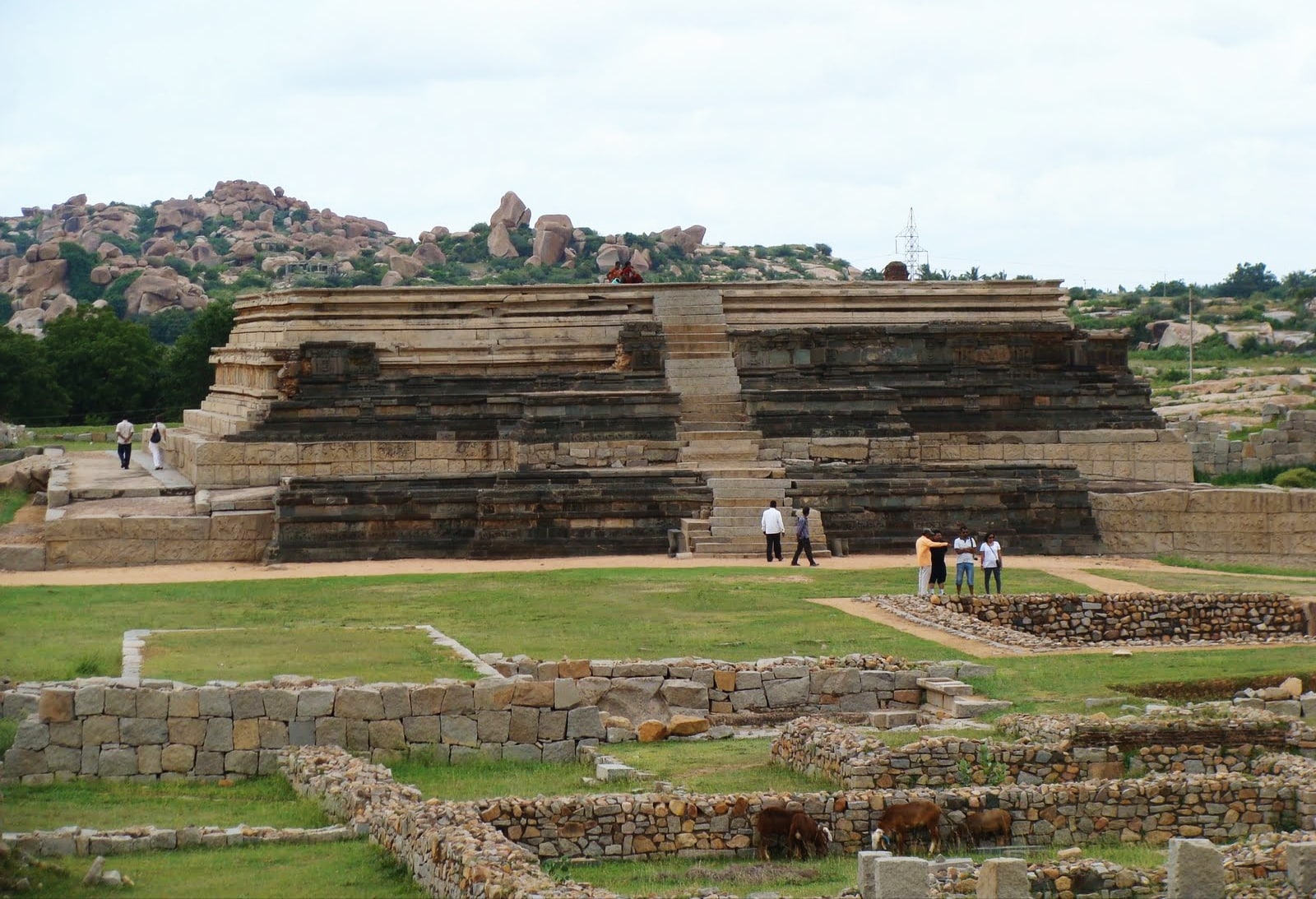
Hemakuta Hill Temple Complex
Hemakuta Hill, also known as the Hemakuta Hill Temple Complex, is a prominent landmark in Hampi, Karnataka, renowned for its ancient temples, shrines, and ruins from the Vijayanagara Empire dating back to the 14th to 16th centuries. Unlike many Hindu temples, some structures on Hemakuta Hill lack traditional idols, adding to their unique architectural charm. The hill offers panoramic views of the surrounding landscape, making it a popular spot for photography and sunsets. Read More »
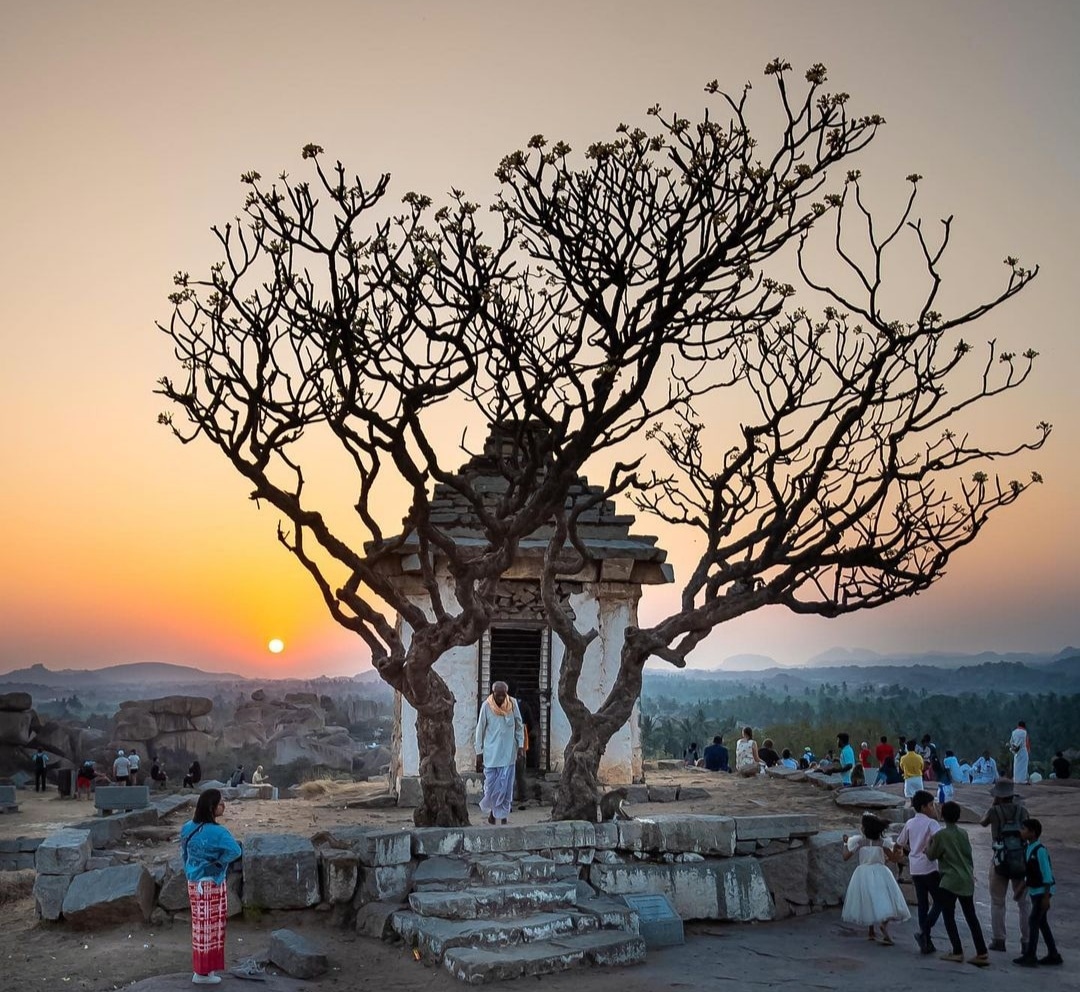
Kadalekalu Ganesha
Kadalekalu Ganesha, located in Hampi, Karnataka, is a famous Hindu temple dedicated to Lord Ganesha. It is best known for its massive monolithic statue of Ganesha, which stands 4.6 meters (15 feet) tall. The name “Kadalekalu” comes from the Kannada word for Bengal gram, as the statue’s belly is believed to resemble the shape of a Bengal gram. Situated on the northeastern edge of Hemakuta Hill, just 200 meters from Hampi Bus Stand, the temple offers stunning panoramic views of the surrounding ruins. Read More »
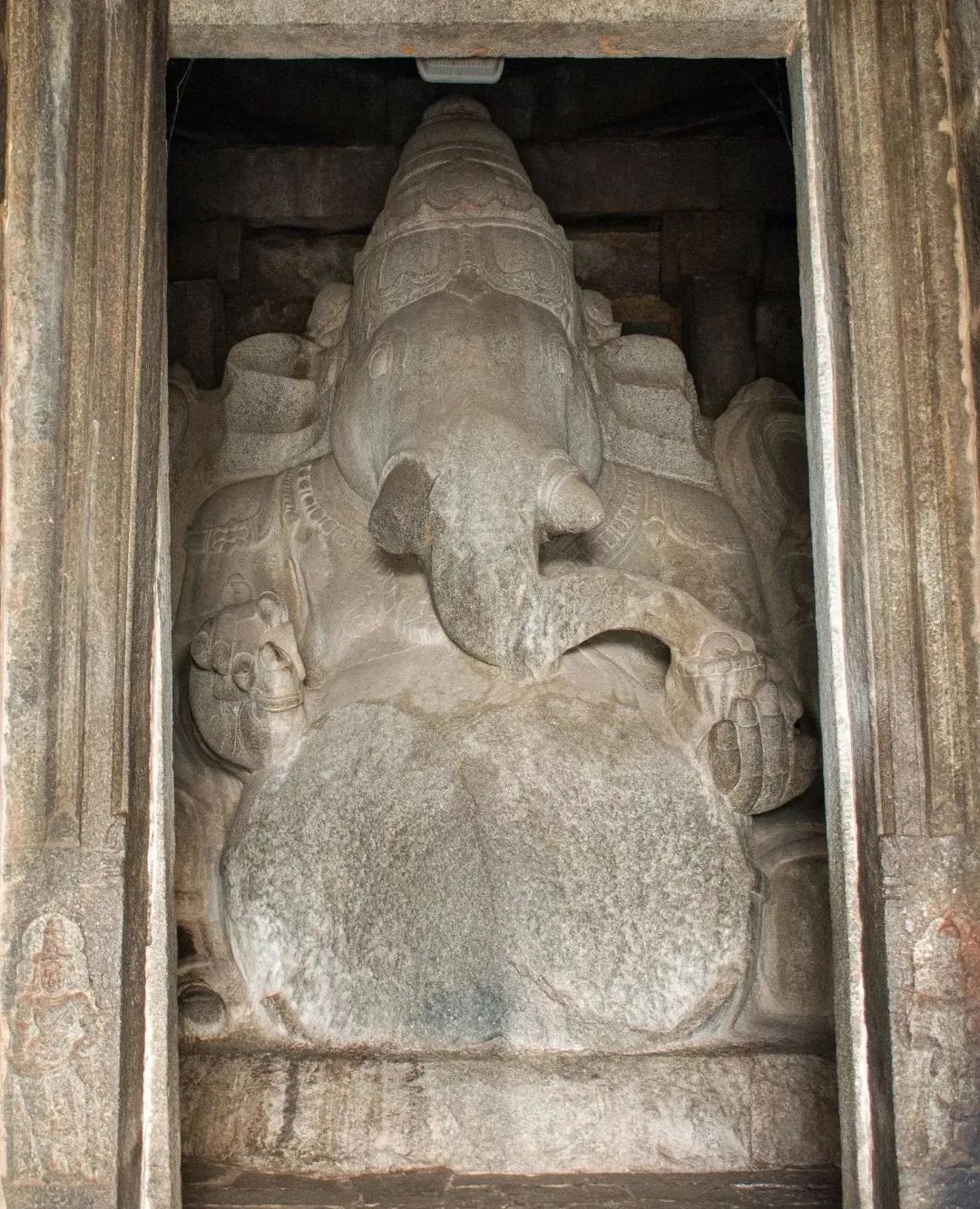
Sasivekalu Ganesha
Sasivekalu Ganesha, located in Hampi, Karnataka, is a historic Hindu temple known for its monolithic statue of Lord Ganesha. Carved from a single block of granite, this 8-foot-tall statue is named “Sasivekalu,” meaning “Mustard Seed Ganesha” in Kannada, referring to the deity’s round belly. Though no longer an active place of worship, the temple’s spiritual aura and architectural beauty continue to attract visitors. Read More »
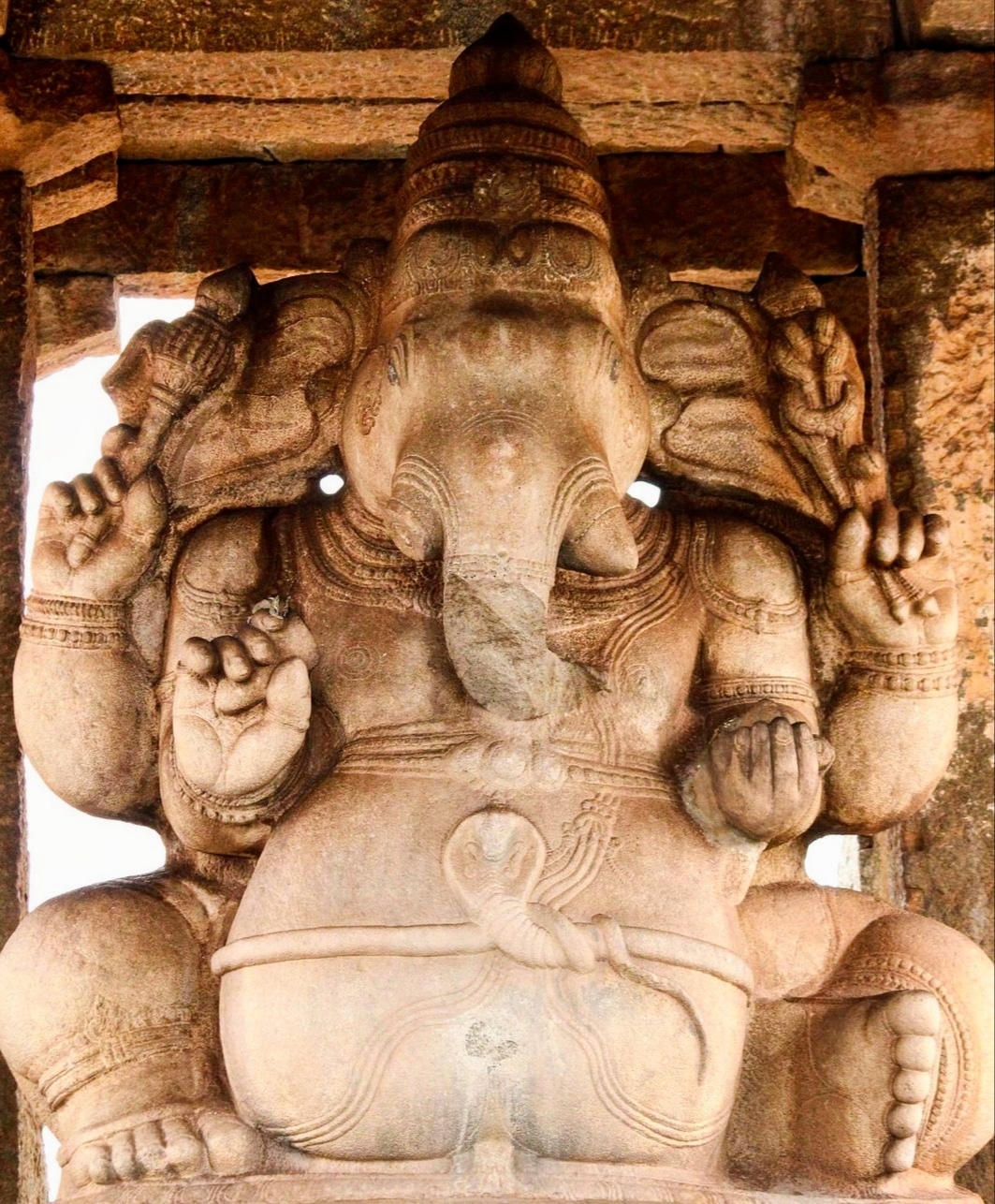
Lakshmi Narasimha Statue
The Lakshmi Narasimha Statue in Hampi is a colossal monolithic sculpture carved from a single granite boulder, showcasing the remarkable craftsmanship of the Vijayanagara Empire. Standing 6.7 meters (22 feet) tall, it was built in 1528 AD during the reign of Krishnadevaraya. The statue depicts Narasimha, the fierce half-man, half-lion incarnation of Lord Vishnu, who appeared to defeat the demon king Hiranyakashipu. Read More »
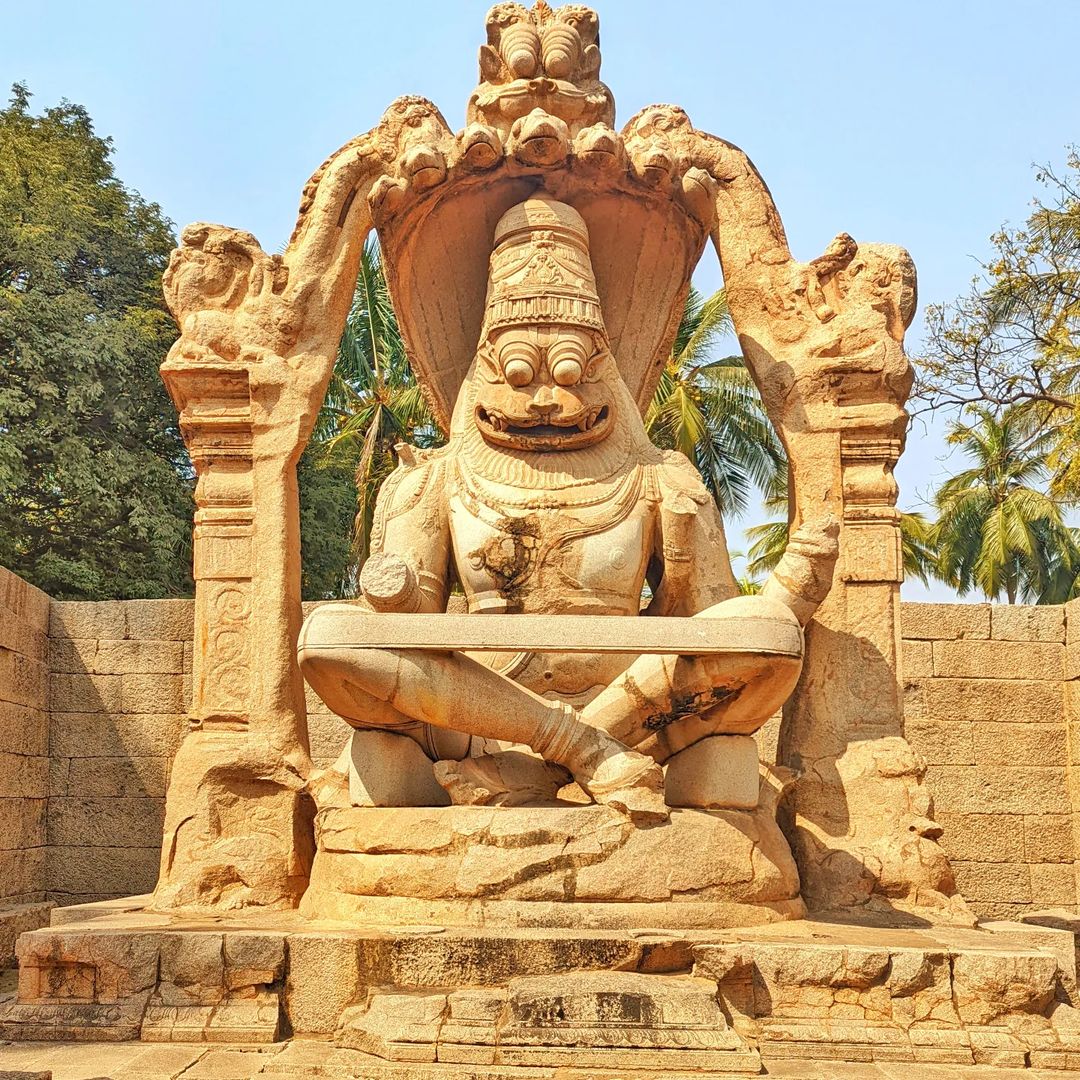
Badavilinga Temple
The Badavilinga Temple in Hampi is home to the largest monolithic Shiva Linga in the region. Carved from a single stone, this three-meter-tall Linga is housed within a small chamber and is partially submerged in water, adding to its mystical aura. Built during the Vijayanagara Empire (14th-16th centuries AD), the temple’s name comes from the Kannada word “Badavi” (poor) and “Linga” (symbol of Lord Shiva), suggesting a legend of its origins. Read More »
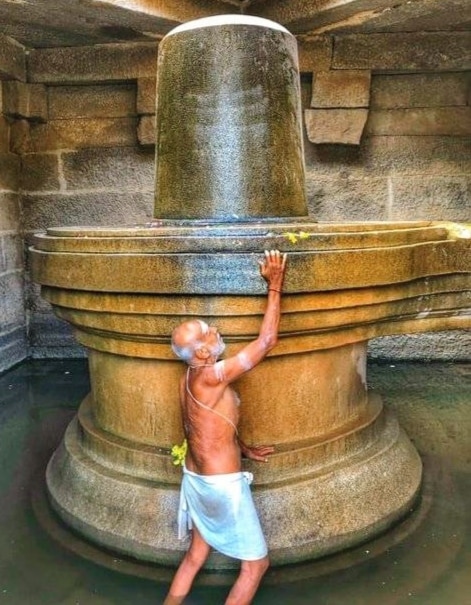
Krishna Temple
The Krishna Temple in Hampi is a beautiful historical monument built in 1513 AD by Emperor Krishnadevaraya of the Tuluva dynasty. It was constructed to celebrate his victory over the eastern kingdom of Utkala (present-day Odisha). The temple once housed the idol of Bala Krishna, which the king brought from Udayagiri during his Orissa campaign and placed in the mahamandapa. The temple is known for its stunning architecture, intricate carvings, and rich history. Read More »
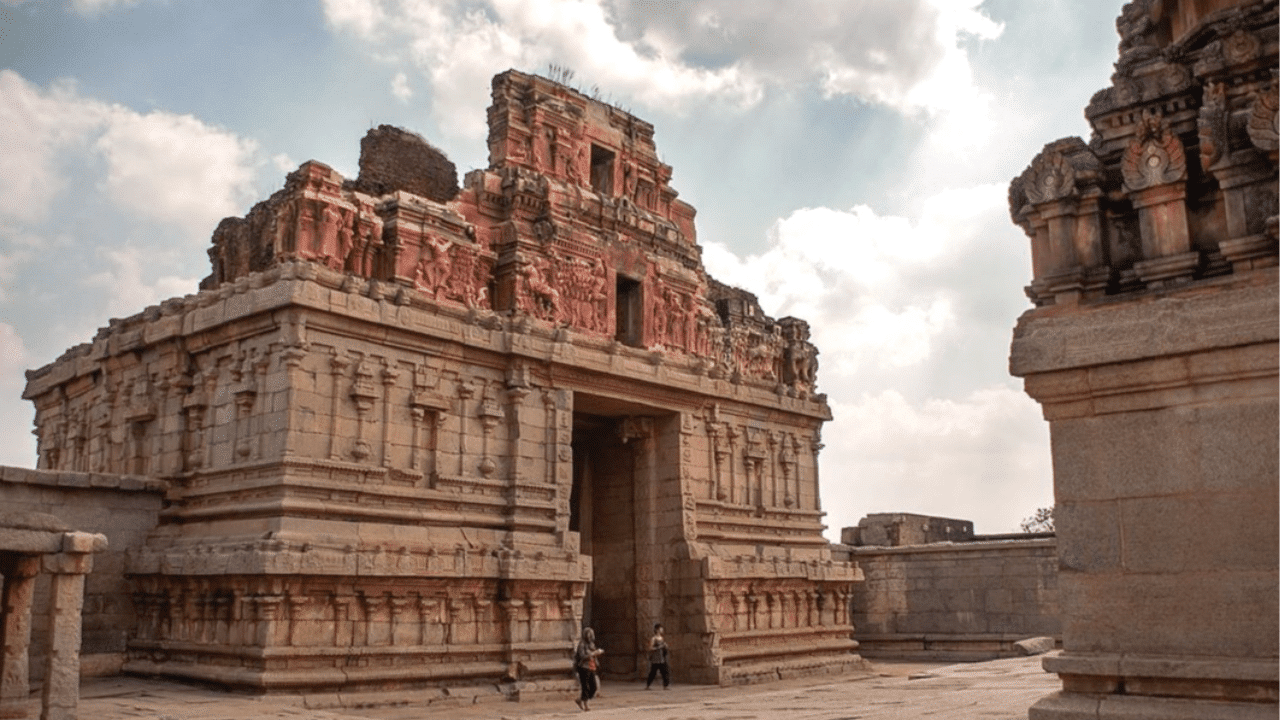
Hampi Bazaar
Hampi Bazaar is a historic marketplace stretching over a kilometer, once a bustling trade center for pearls and gems during the Vijayanagara Empire. Today, it is a small yet lively market where visitors can find souvenirs, handicrafts, and local treasures, keeping the spirit of Hampi’s past alive. Walking through the bazaar feels like stepping back into the 14th-16th centuries when the empire thrived. It also serves as the gateway to exploring Hampi’s famous ruins, including the Stone Chariot, Vittala Temple Complex, and Royal Enclosure. Read More »
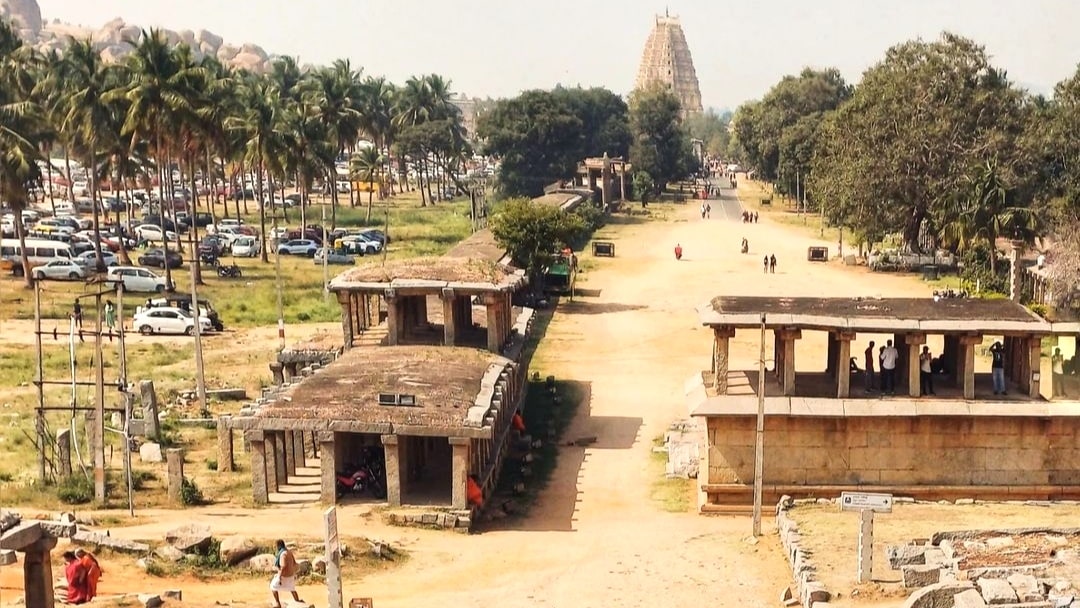
Monolithic Bull
The Monolithic Bull, also known as Yeduru Basavanna, is a massive granite sculpture in Hampi, Karnataka, showcasing the remarkable craftsmanship of the Vijayanagara Empire from the 14th to 16th centuries. It represents Nandi, the sacred bull and devoted vehicle of Lord Shiva, symbolizing strength, loyalty, and divinity. As a guardian of Shiva’s abode, it holds deep spiritual significance in Hindu culture. Visitors can explore the towering Monolithic Bull statue, a two-story pavilion, stunning views of the Virupaksha Temple, the nearby Hampi Bazaar, and the surrounding boulders and rock pillars. Read More »
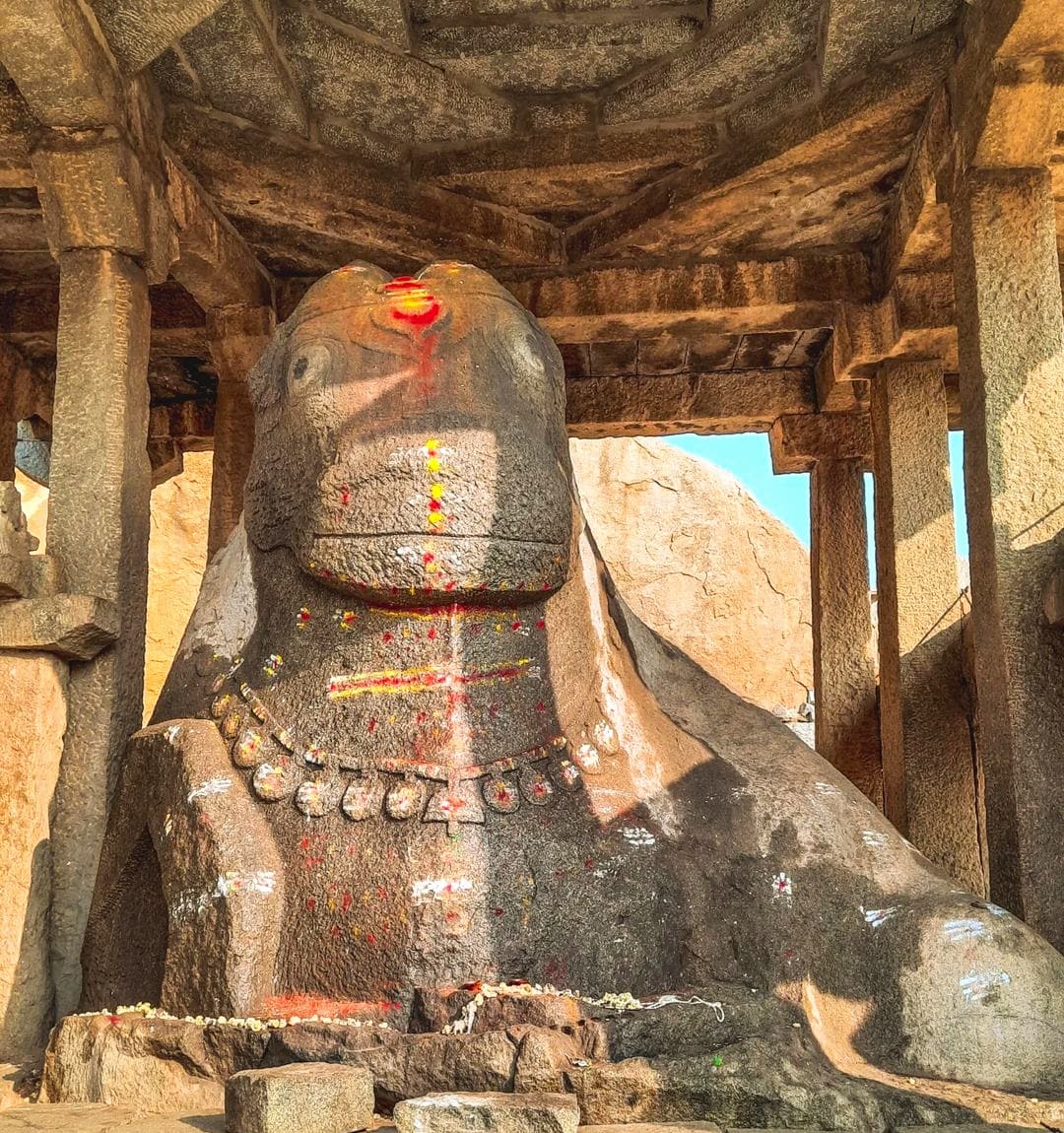
Matanga Hill
Matanga Hill, the highest point in Hampi, offers breathtaking panoramic views of the ancient ruins and the Tungabhadra River. According to legend, it was once the hermitage of Sage Matanga from the Ramayana. Several trekking paths lead to the summit, where the Veerabhadra Temple stands. The climb rewards visitors with stunning vistas of the Virupaksha Temple, the sprawling ruins of the Vijayanagara Empire, and mesmerizing sunrises or sunsets. Read More »
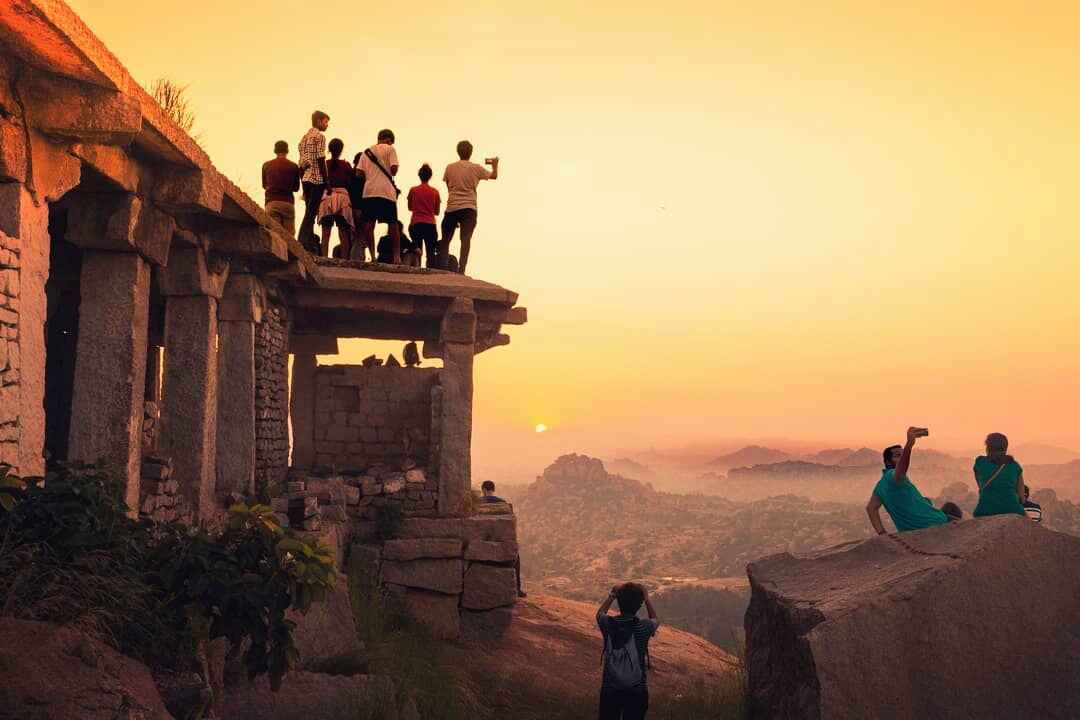
Achyutaraya Temple
The Achyutaraya Temple in Hampi is a stunning example of Vijayanagara-era Dravidian architecture, built in 1534 AD during King Achyutaraya’s reign. Dedicated to Lord Tiruvengalanatha, a form of Vishnu, the temple features intricately carved pillars, towering gopurams, and a grand temple complex that reflects both artistic excellence and spiritual significance. Visitors can explore its sanctum sanctorum, the beautifully designed Kalyana Mandapa, Pushkarani (temple tank), and the historic Achyutaraya Bazaar. Read More »
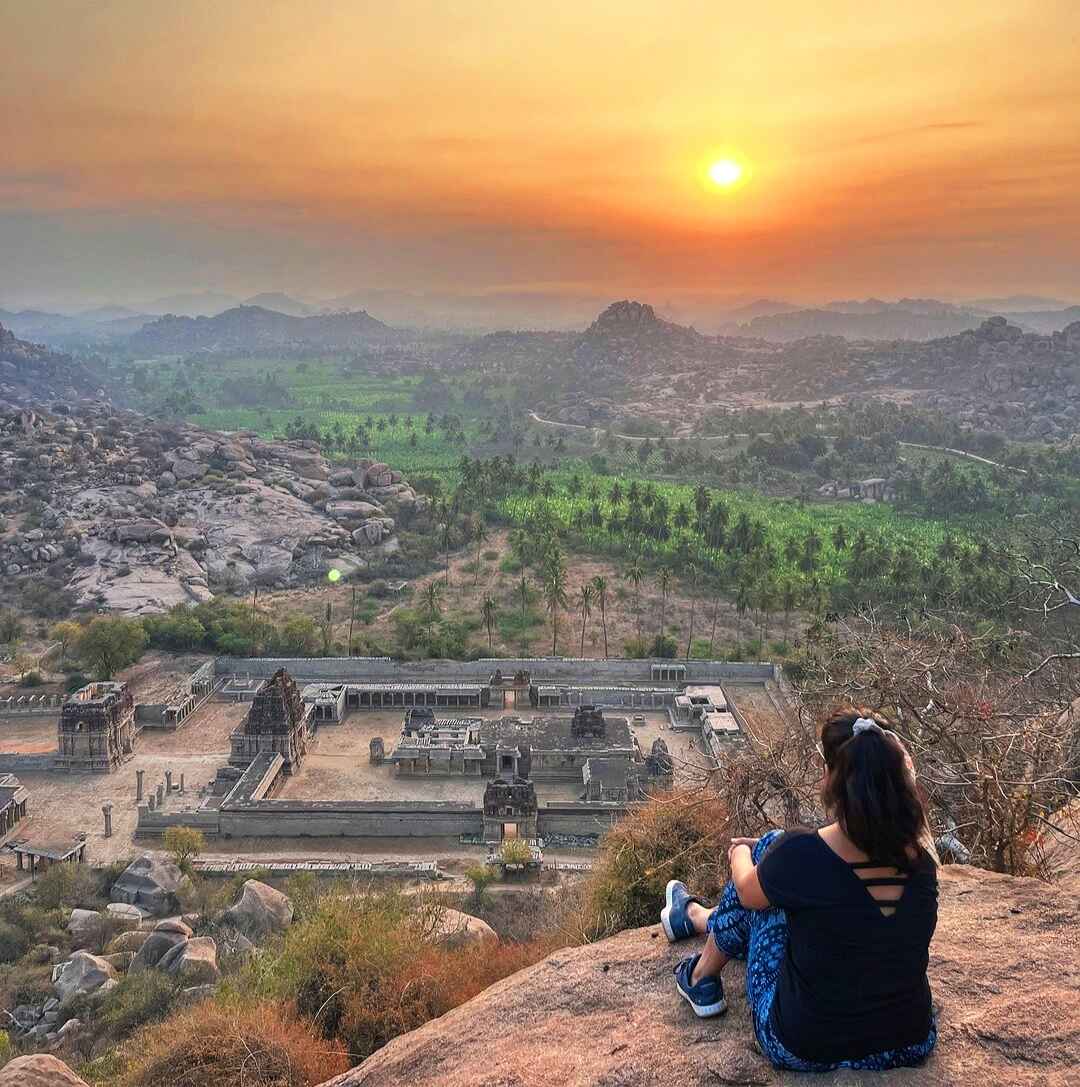
Chakratirtha
Chakratirtha in Hampi, Karnataka, is a sacred site along the Tungabhadra River, known for its spiritual significance and serene surroundings. Devotees visit to take a holy dip and perform rituals, while history enthusiasts explore the ancient ruins and inscriptions nearby. The area is home to must-see attractions like the Kodanda Rama Temple, Yantrodhara Anjaneya Temple, ancient pavilions, rock carvings, and the Kampabhupa Pathway. Visitors can also enjoy scenic river views, witness spiritual ceremonies, and experience a peaceful atmosphere ideal for relaxation and meditation. Read More »
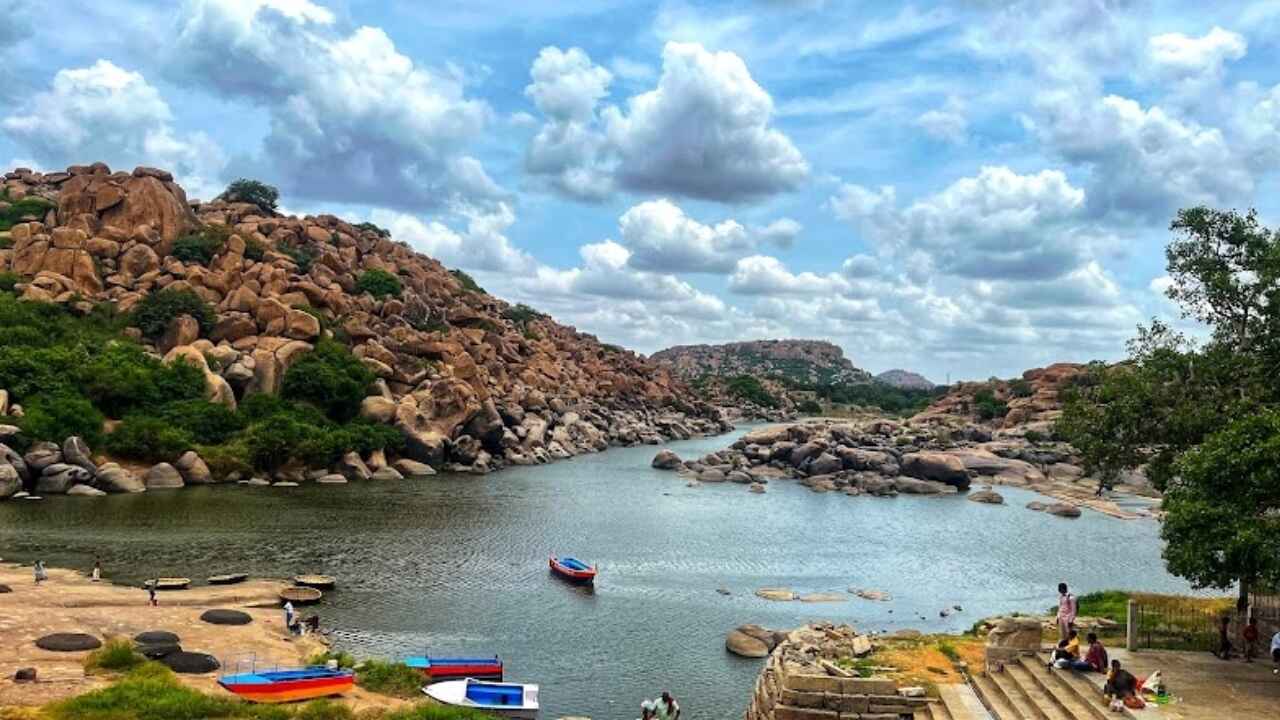
Yantrodharaka Hanuman Temple
The Yantrodharaka Hanuman Temple in Hampi is a sacred site known for its deep spiritual significance and architectural beauty. The name “Yantrodharaka” comes from the belief that Lord Hanuman holds the Yantra (mystical diagram) within himself, symbolizing his immense power. Built during the reign of Krishnadevaraya (1509-1529 CE), the temple is believed to ward off evil, bring success, and fulfill devotees’ wishes. Located on a small hill near the Tungabhadra River and Chakratirtha, it offers a peaceful retreat for pilgrims. Read More »
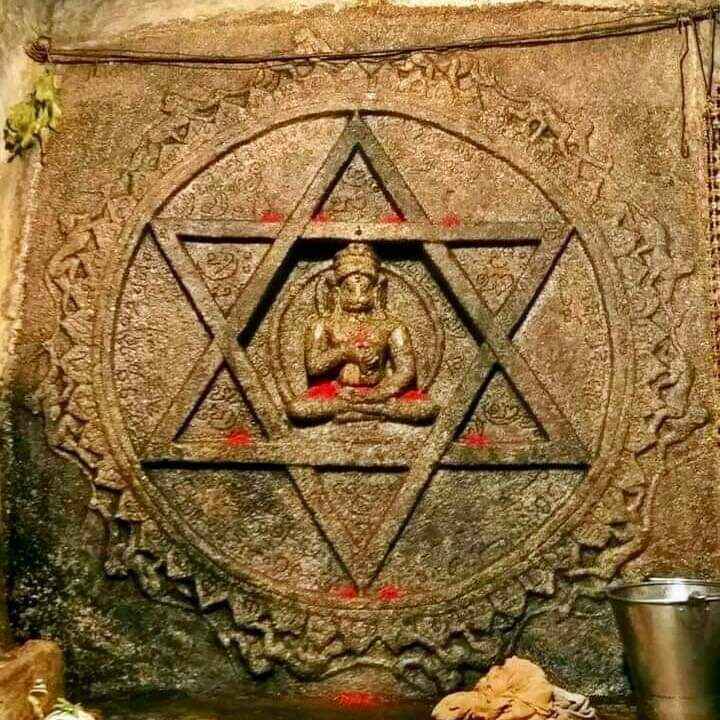
Sugriva’s Cave
Sugriva’s Cave in Hampi is a historically and mythologically significant site believed to be where Lord Rama met Sugriva, the monkey king, as mentioned in the Ramayana. Nestled among Hampi’s rocky terrain, the cave has a small entrance leading to a spacious chamber with natural rock formations. Sunlight filtering through the cave’s openings creates a mystical atmosphere, making it a peaceful spot for meditation and reflection. Read More »

Underground Shiva Temple
The Underground Shiva Temple, also known as the Prasanna Virupaksha Temple, is a unique architectural marvel in Hampi, Karnataka. Built below ground level during the 14th-century Vijayanagara Empire, it showcases impressive engineering and intricate carvings. Due to its low elevation, the temple is often partially submerged, especially during the monsoon season, creating a mystical atmosphere. Read More »
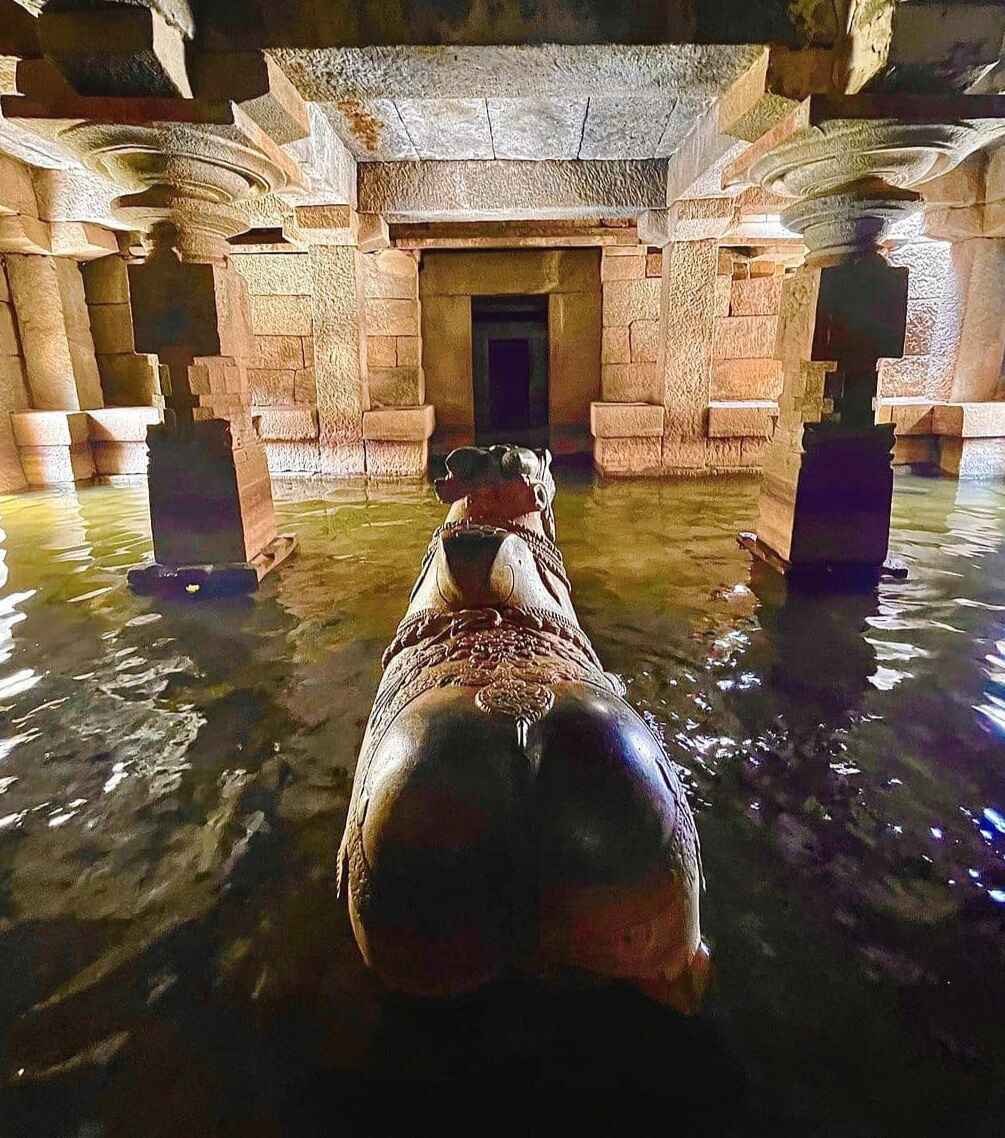
Koti Linga
The banks of the Tungabhadra River in Hampi are dotted with sheets of bedrock and scattered boulders, adorned with intricate carvings of gods, goddesses, and religious symbols from both Shaiva and Vaishnava traditions. Among these, Shiva lingas are especially prominent. One remarkable site is the Kotilinga, located near the Kodandarama Temple and Chakratirtha, where the river changes direction northward. “Koti Linga” means “Crore Lingas,” and while the actual number is much smaller.
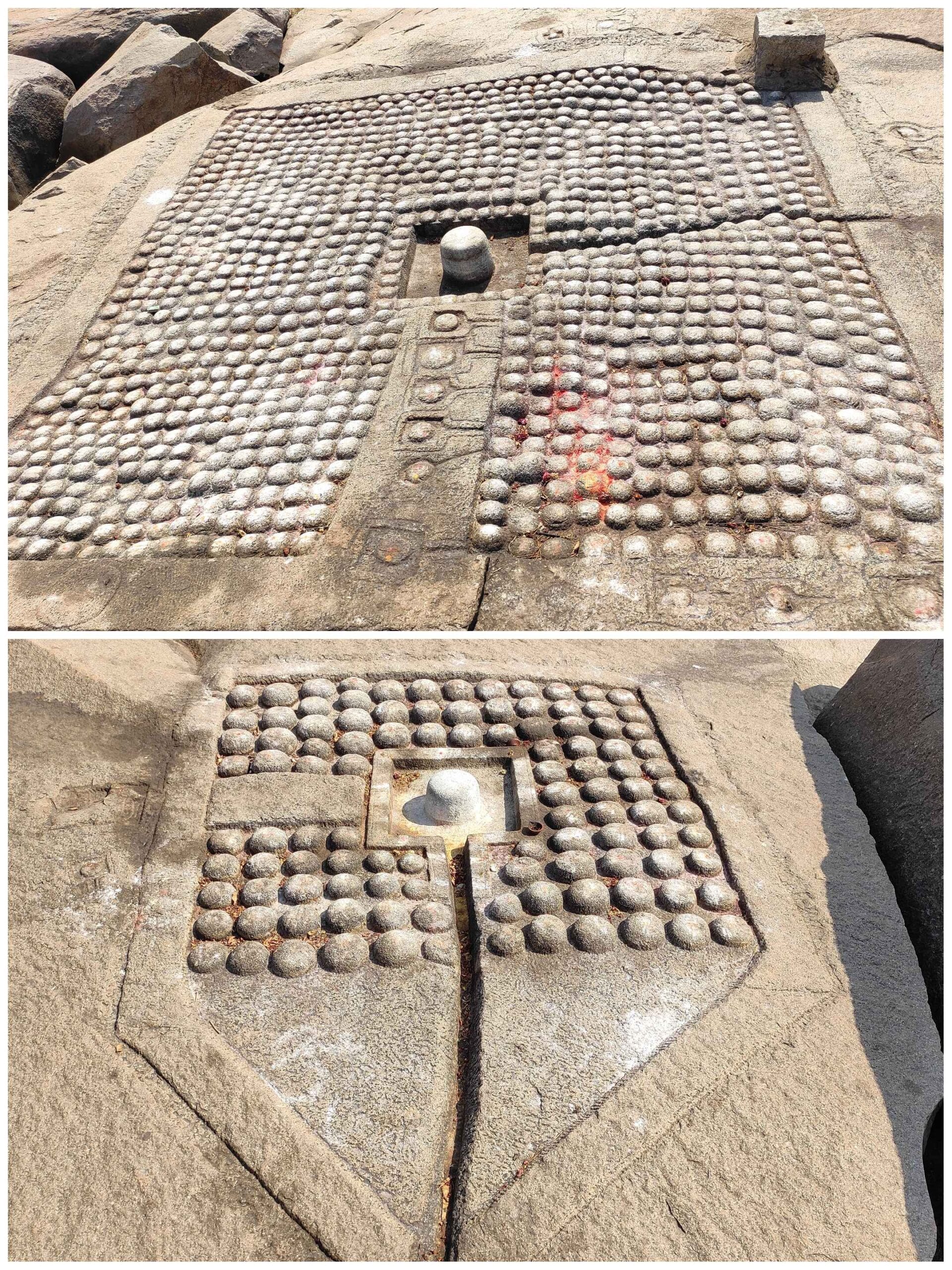
Malyavanta Raghunatha Temple
The Malyavanta Raghunatha Temple, perched atop Malyavanta Hill, is a 16th-century temple dedicated to Lord Rama. Located about 6 kilometers from the Hampi Bus Stand and 2.5 kilometers from Kamalapur Bus Stand, the temple is accessible by a short but slightly steep 350-meter walk from the roadside.
According to legend, Lord Rama and Lakshmana took shelter here during their search for Sita. The temple features grand eastern and southern gopurams, typical of Vijayanagara architecture. Behind the main temple lies the Shiva Cave, home to a shrine dedicated to Lord Shiva, with carved Nandi statues and Shiva Lingas on the rocky floor. A cleft in the rock, believed to be caused by Lakshmana’s arrow, adds to the site’s mystique. From the hilltop, visitors can enjoy breathtaking panoramic views of Hampi’s landscape, along with stunning sunrise and sunset vistas.
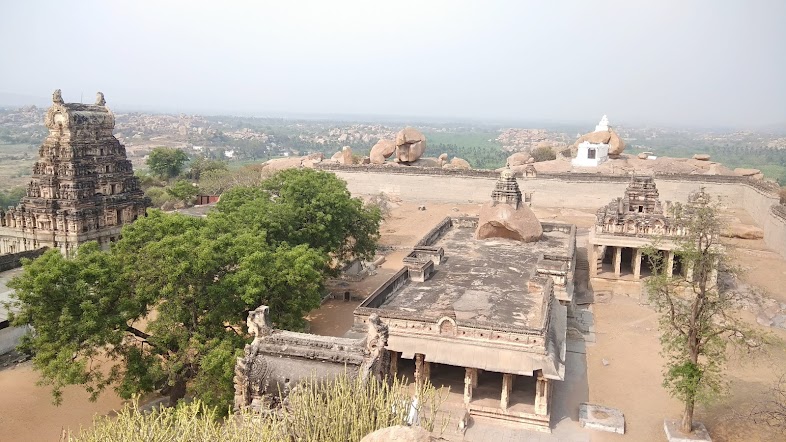
King’s Balance
The King’s Balance, also known as Tula Bhara, is a 15th-century monument in Hampi, believed to have been used for the Tulapurusha Dana ceremony, where a person was weighed against gold, gems, or grains, which were then donated to the poor. Located near the Vittala Temple, this structure consists of two intricately carved pillars supporting a massive horizontal beam. The beam features a miniature shala at the center and two kutas at the corners, with three loops beneath it that likely held the weighing balance. This monument offers a fascinating glimpse into the grandeur and charitable traditions of the Vijayanagara Empire.
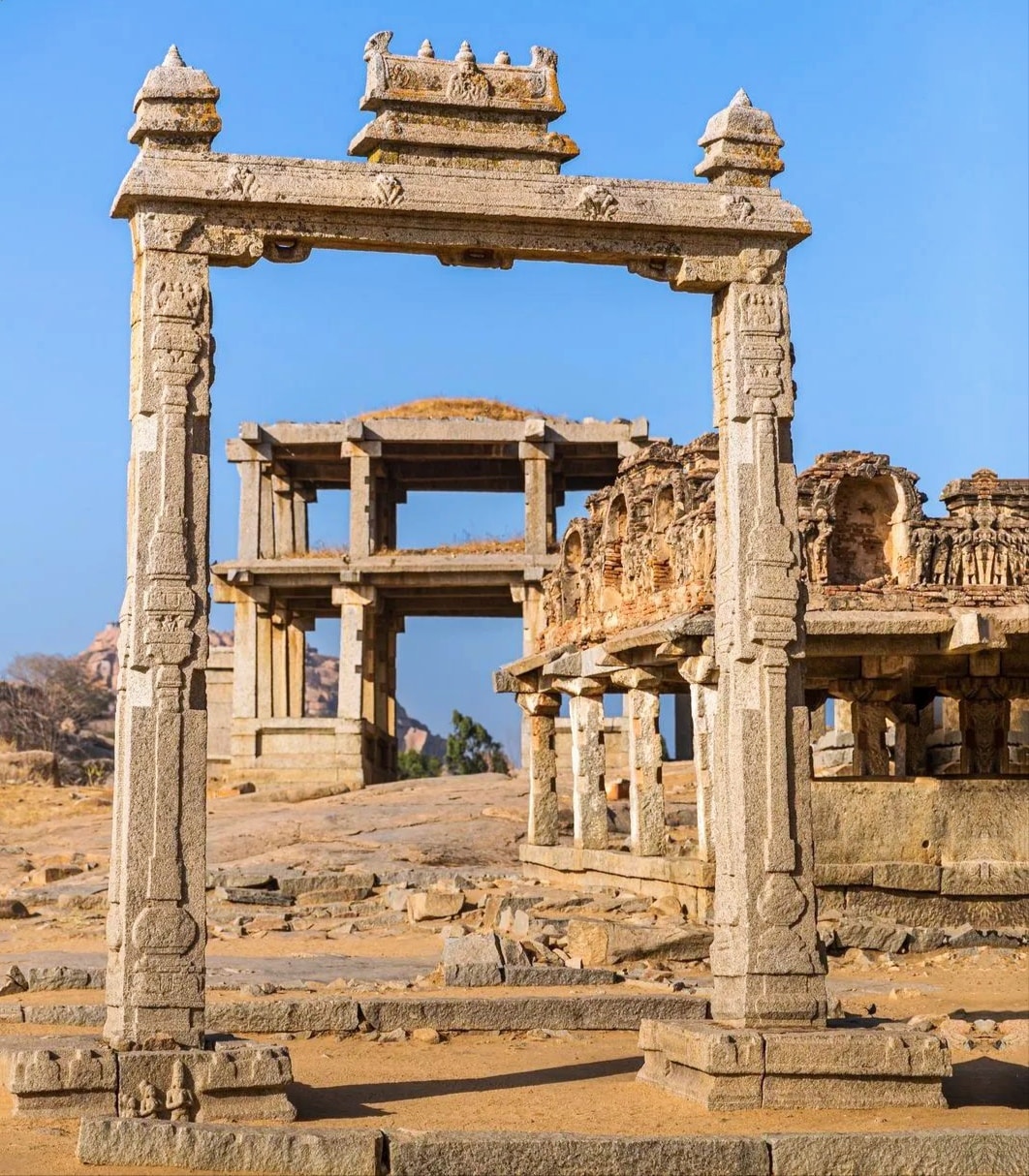
Narasimha Temple
The Narasimha Temple in Hampi is perched on a boulder hill, located along the route from Hampi Bazaar to the Vittala Temple, directly facing Sugriva’s Cave. Built in 1379 CE by Chakravarti Ayya during the reign of Immadi Harihara. The temple is enclosed within a precinct and features a distinctive double-storeyed gateway to the northeast. Above the sanctum, a Phamsana-style shikhara (tower) adds to its architectural beauty. Due to its elevated position, the temple also offers breathtaking sunset views, making it a must-visit site in Hampi.
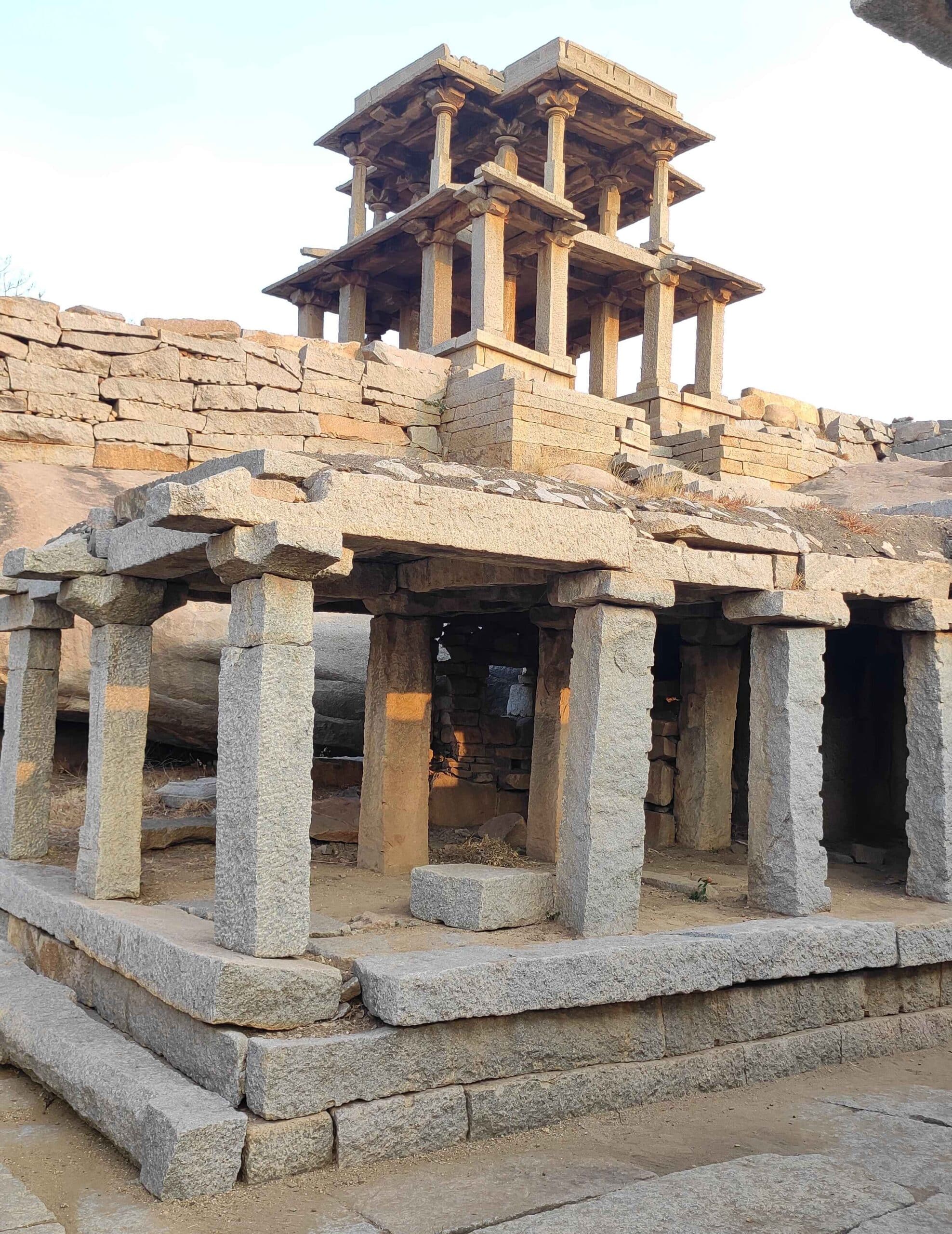
Ananthashayana Temple
The Ananthashayana Temple, also known as Anantashayana Gudi, is dedicated to the reclining form of Lord Vishnu and is located in Ananthashayana village, about 3.5 kilometers from the Hospet Bus Stand and 10 kilometers southwest of Hampi. Built in 1524 AD by Krishnadevaraya in honor of his son, the temple originally housed an idol of Ananthapadmanabha, though the idol is now missing.
The temple features a massive rectangular sanctum with three doorways, tall intricately carved pillars, and a grand entrance gateway, showcasing the architectural brilliance of the Vijayanagara era. Visitors can explore the ancient well, a large inscription on the Mahamandapam wall, a shrine dedicated to Devi, a small pavilion, and beautifully sculpted artworks throughout the temple.
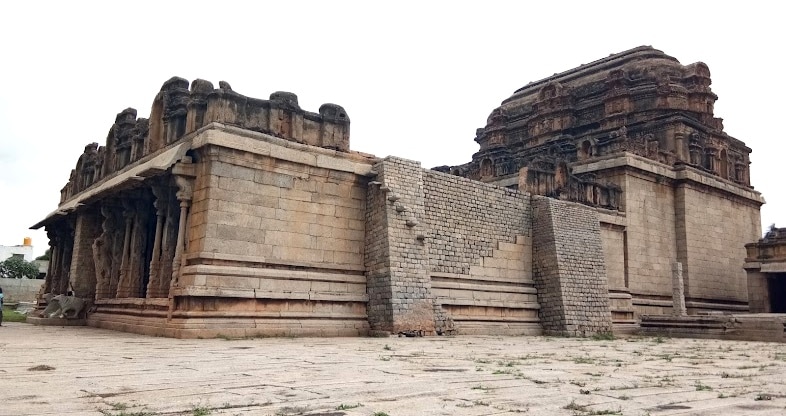
Vishnu Temple
Between the Kodandarama and Varaha Temples lies a lesser-known temple in a neglected state. Adjacent to a rock formation, it features a high porch with a Shikhara supported by four tall pillars. Inside, a low-ceilinged Garbhagriha houses inscriptions on its walls and a damaged monolithic sculpture believed to depict Vishnu, Lakshmi, and Padmavati. Near the entrance, a beautifully carved image of Vishnu reclining on Anantha, the seven-hooded serpent, is etched into the rock, hinting at the temple’s likely dedication to Lord Vishnu.
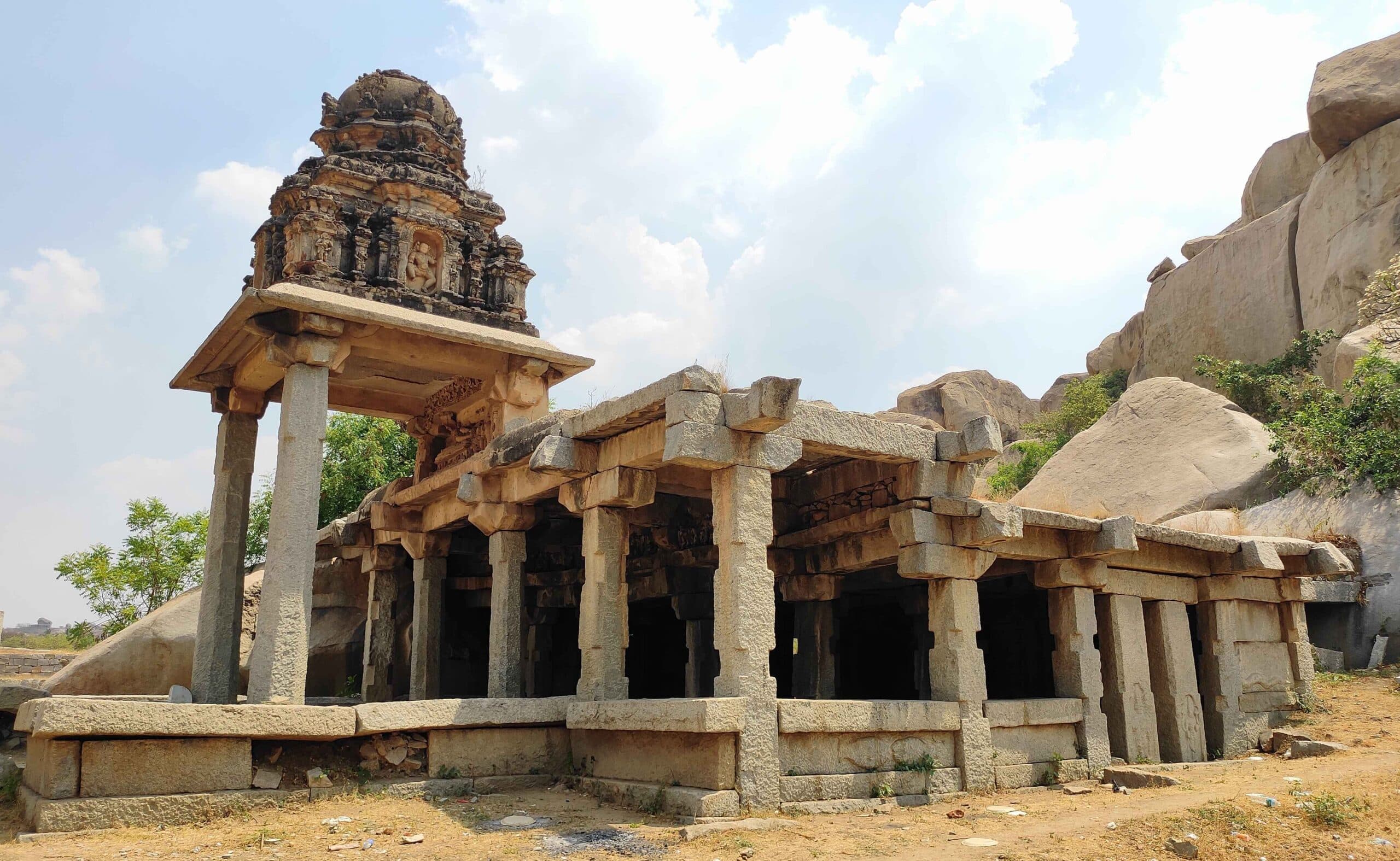
Hastagiri Ranganatha Temple
Hastagiri Ranganatha Temple, situated behind the Kothanda Ramaswamy Temple along the Tungabhadra River, is a modest yet historically significant structure built against a rocky hill in the 16th century. Accessible via a short climb from the river-side trail, the temple features a simple pillared hall with a lime concrete roof leading to a sanctum sanctorum that remains closed. Despite its simplicity, the temple’s elevated location offers breathtaking views of the surrounding landscape.

Uddana Veerabhadra Temple
The Uddana Veerabhadra Temple, also known as Mudduviranna Temple, is located southeast of the Chandikeshvara Temple, about 900 meters from the Hampi Bus Stand. Built in 1545 AD by Dalavayi Jangamayya, the temple features a spacious garbhagriha, an antarala, and a pillared mukhamantapa. Its main attraction is the 16-foot-high sculpture of Chaturbhuja Veerabhadra, the largest of its kind from the Vijayanagara period, depicted holding a bow, arrow, sword, and shield. An image of goat-headed Dakshabrahma is also present at the extreme right, adding to the temple’s historical and religious significance.
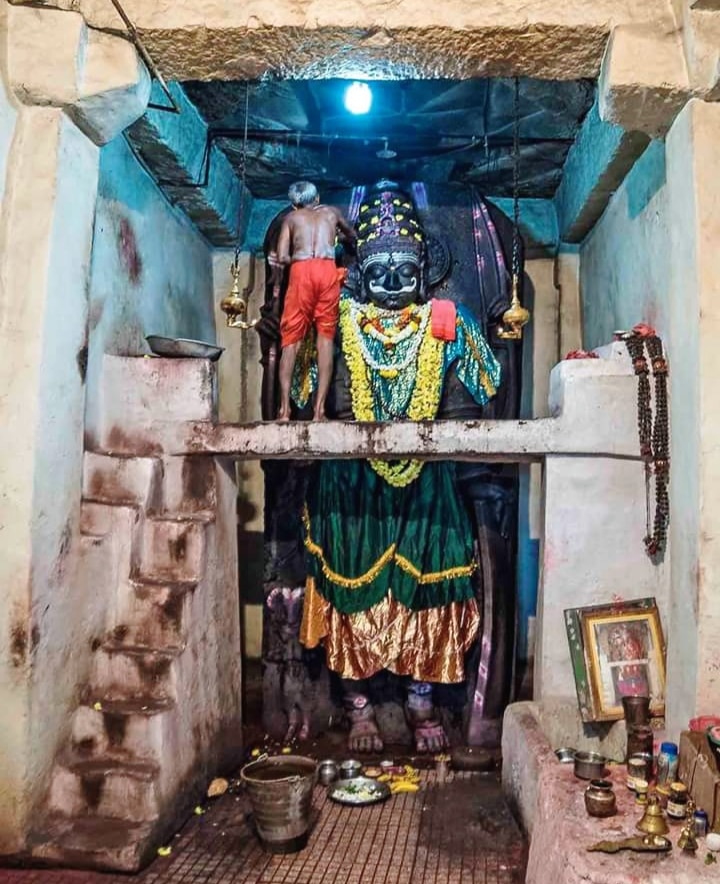
Purandaradasa Mantapa
The Purandaradasa Mantapa, a small open-pillared pavilion on the banks of the Tungabhadra River behind the Vittala Temple in Hampi, is dedicated to the legendary composer and saint Purandaradasa, known as the “father of Carnatic music.” Built in the 16th century, this sixty-pillared structure features massive square pillars supporting a plain ceiling. Inside, a small enclosure houses a statue of Purandaradasa playing the tambura. During the monsoon season, the rising river often touches or submerges the platform, adding to the mantapa’s serene and picturesque charm.
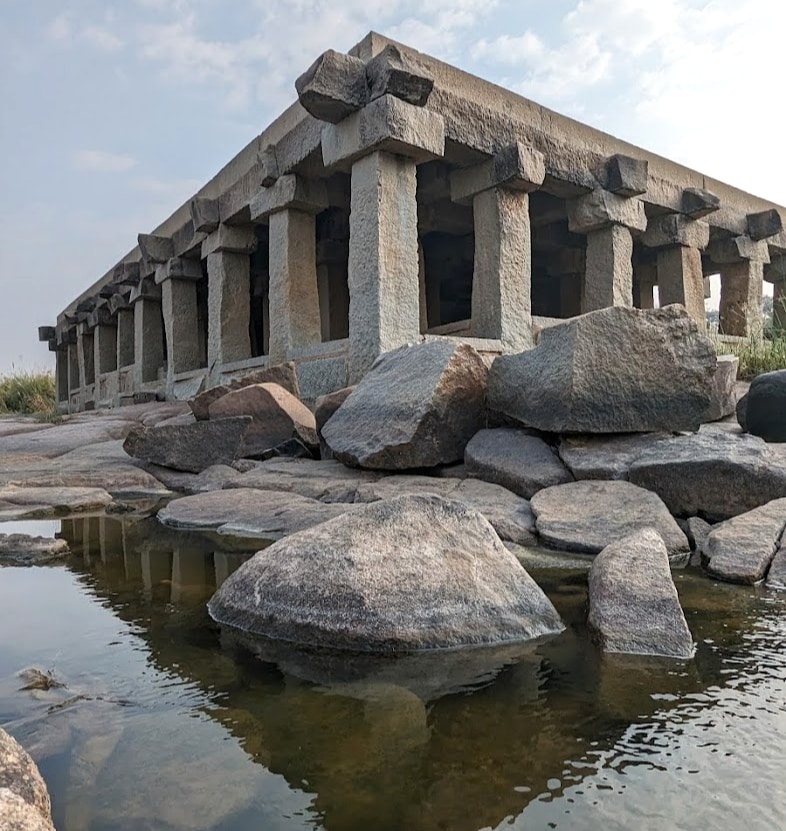
Chandrashekhara Temple
The Chandrashekhara Temple in Hampi, built in the 16th century during the Vijayanagara Empire, is a significant religious and architectural site dedicated to Lord Shiva. Located near the Queen’s Bath and on the way to the Saraswathi Temple, it is easily accessible from both the Kamalapur and Hampi bus stands. This east-facing temple, constructed in the Dravidian style, features two garbhagrihas, an antarala, a navaranga, and a mahamandapa.

Bhima’s Gateway
Bhima’s Gateway, located near the Kamalapur Bus Stand, is a west-facing entrance named after an intricately carved eight-foot-high figure of Bhima on a stone slab nearby. Designed with an outer enclosure to slow invaders, the gateway, though in severe disrepair, still retains its impressive lintels and lotus brackets. It is adorned with sculptures depicting Bhima’s legendary battle with Dushyasana and various Mahabharata scenes. Despite the destruction of the nearby guardhouse, the site remains a fascinating historical landmark showcasing the grandeur and defensive strategies of the Vijayanagara Empire.
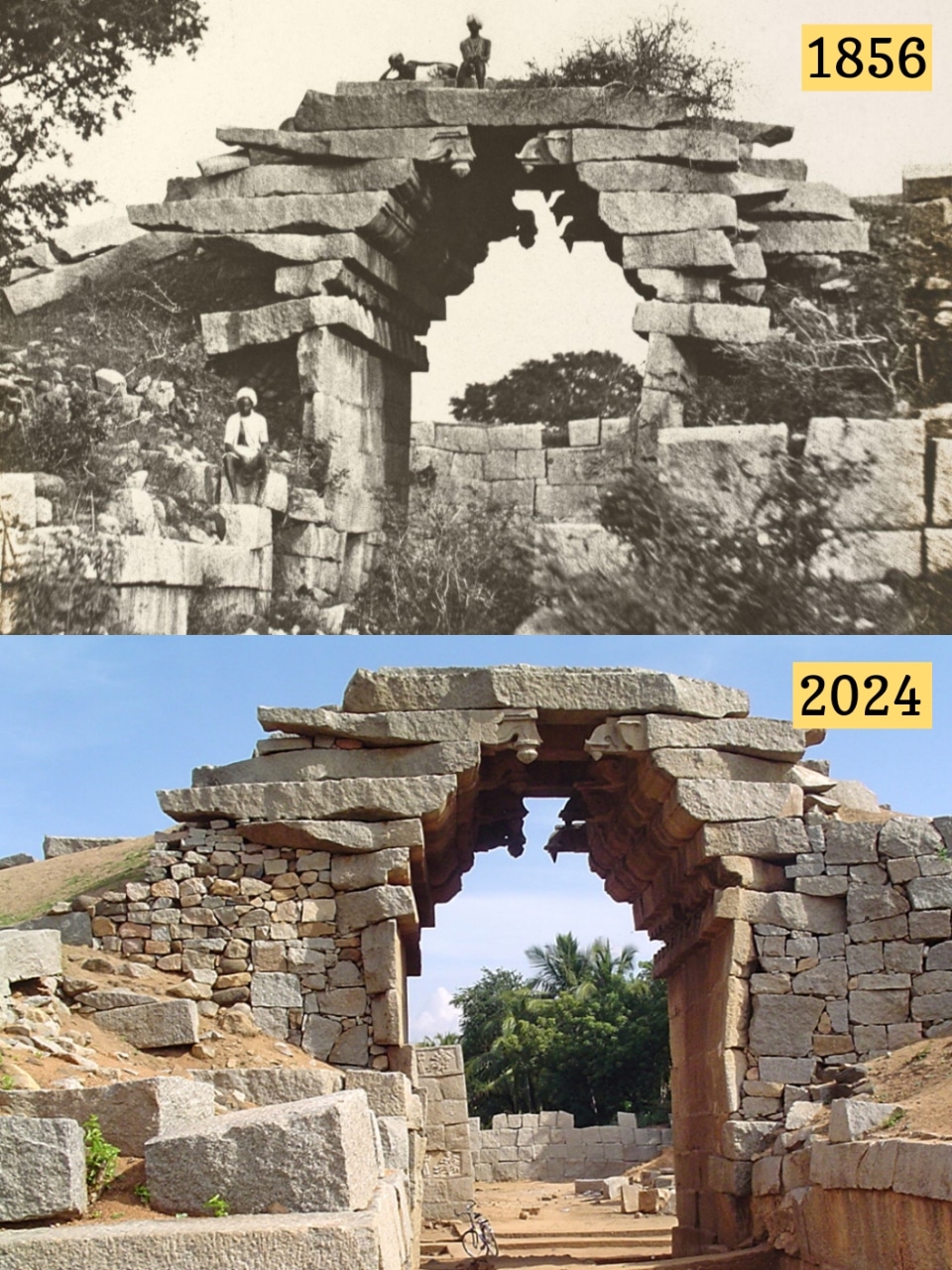
Ganagitti Jaina Temple
The Ganagitti Jaina Temple Complex, also known as the Kunthunatha Jain Temple, was built in 1386 AD by Iruga, the commander-in-chief of Harihara II. Dedicated to Kunthunatha, the 17th Tirthankara, this temple exemplifies early Vijayanagara architecture with influences from the late Chalukya period. Its design is simple yet elegant, featuring a terraced superstructure over the sanctum and porches on the north and east. A prominent highlight is the intricately carved lamp-column at the entrance, bearing an inscription marking its consecration.
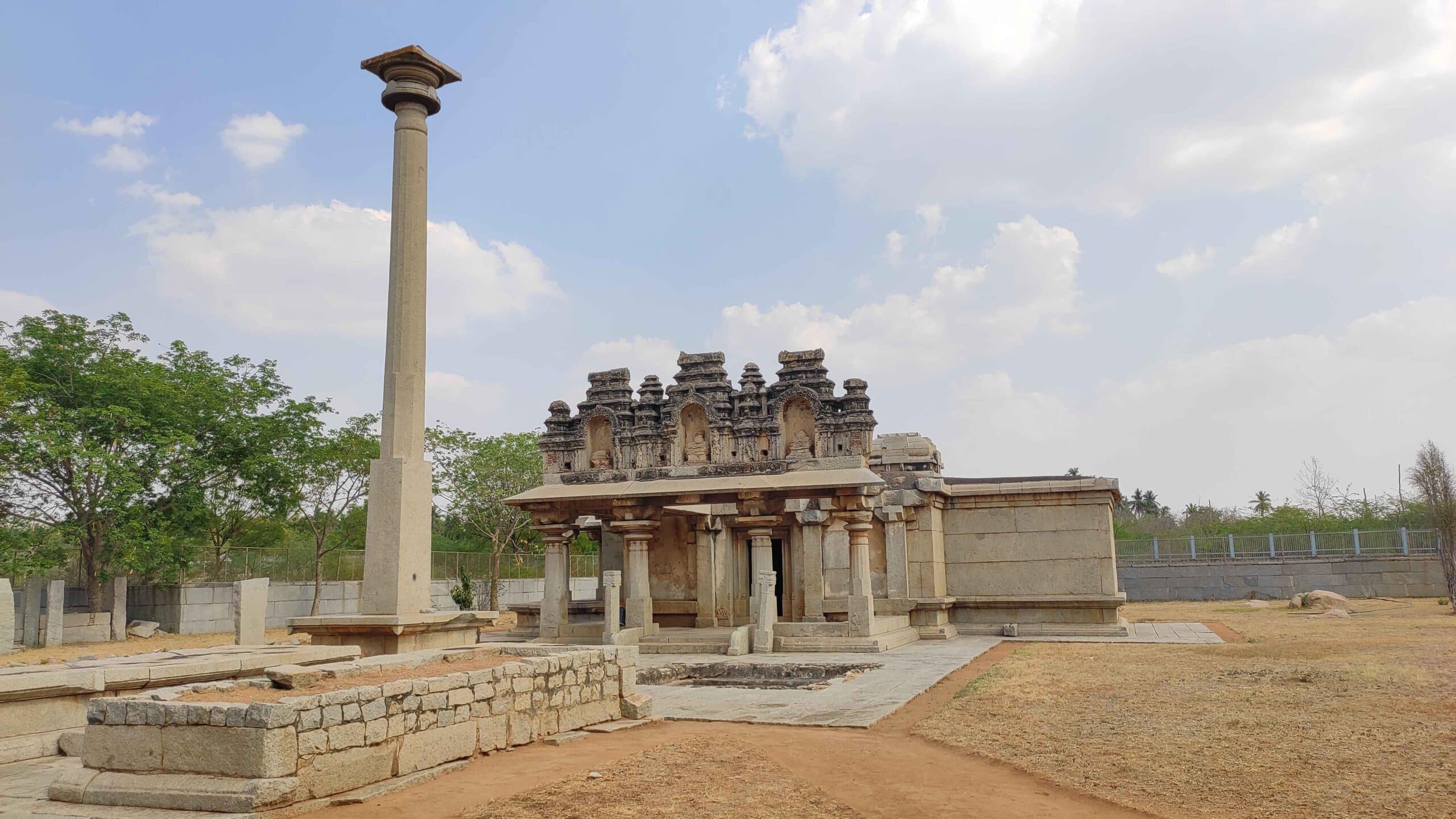
Madhava (Ranga) Temple
The Madhava (Ranga) Temple, located near the Elephant’s Stable and Lotus Mahal in Hampi, is often overlooked due to its cornered position. Dedicated to Madhava, as per an inscription, the temple features an east-facing structure with a garbhagriha, a vestibule, and a spacious 18-pillared mukhamantapa. A notable highlight is the massive three-meter-high Hanuman sculpture housed within the mantapa. An inscription from 1545 AD, during the reign of Sadashivaraya, records the construction of a rangamantapa by Timmaraju, son of Vallabharaju, specifically for hosting dance, vocal, and instrumental music performances.
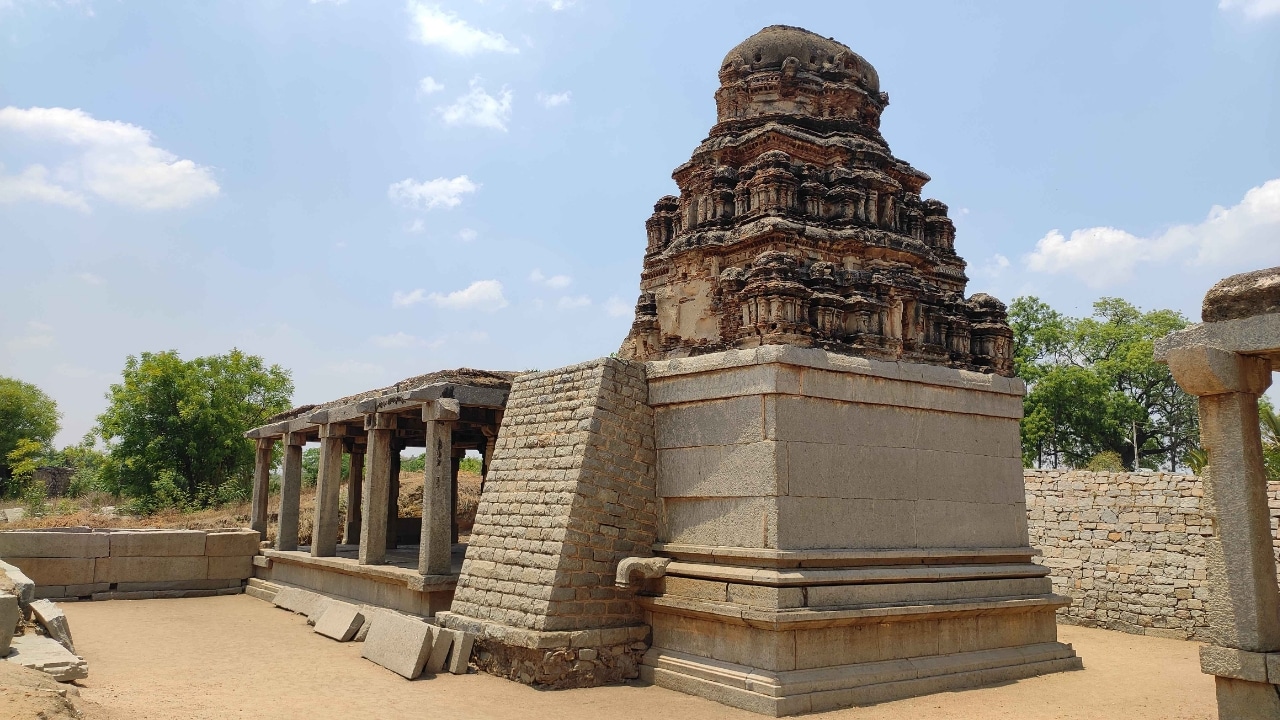
Varaha Temple
The Shiva Temple, locally known as the Varaha Temple, is situated along the Tungabhadra River on the route from Hampi Bazaar to the Vittala Temple, about 1 kilometer from the Hampi Bus Stand. Built in the 15th-16th century, it derives its local name from the royal insignia of the Vijayanagara dynasty—a boar with a dagger, sun, and moon—carved on its eastern entrance wall. The temple stands on a low plinth, enclosed by a cloistered prakara with an eastern entrance. Inside, the sanctum houses a Shiva Lingam, with a Nandi statue facing it.
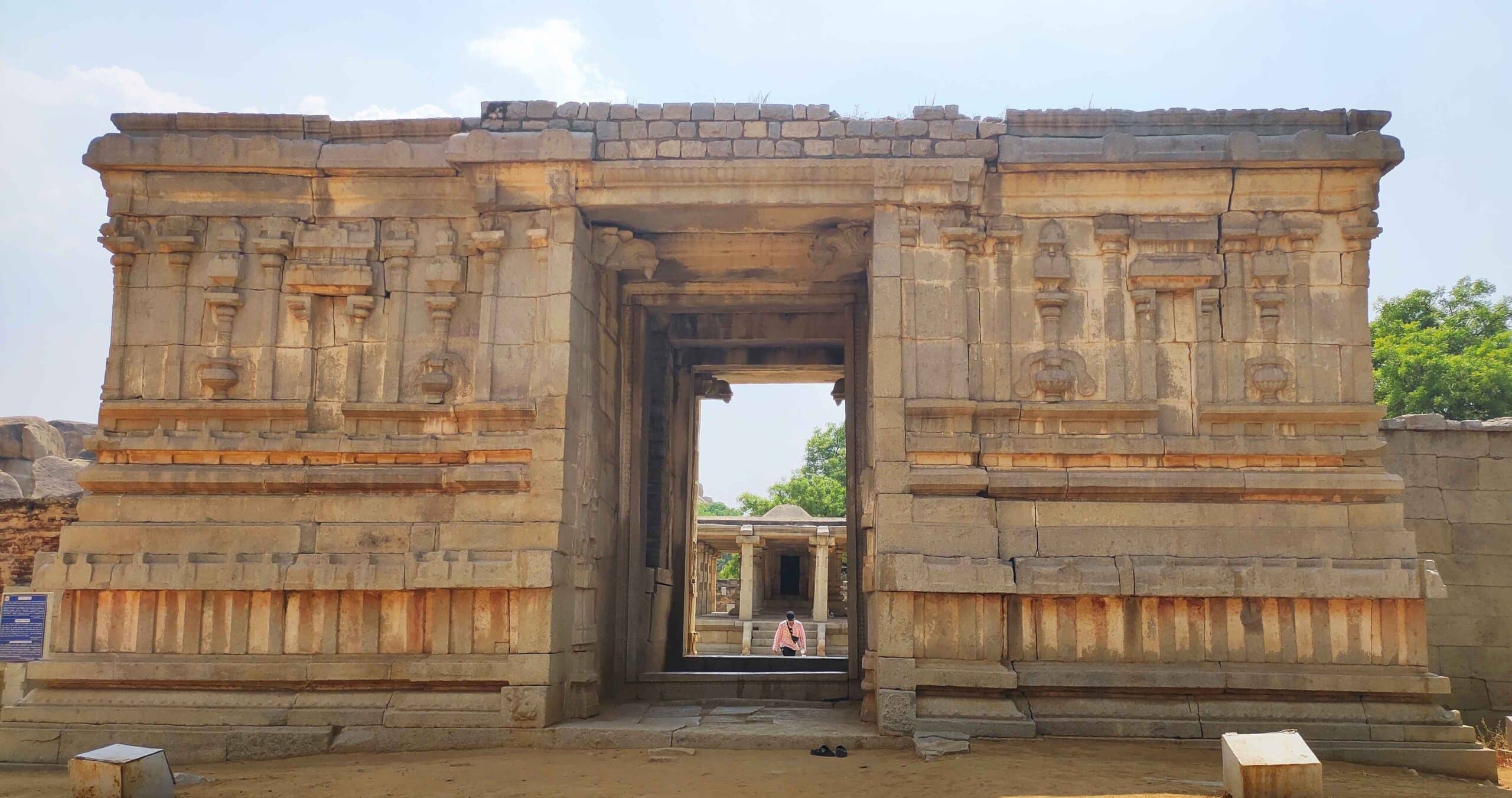
Chandikeshwara Temple
The Chandikeshwara Temple, located next to the Hampi-Kamalapura road, about 900 meters from the Hampi Bus Stand, dates back to the 16th century AD. This east-facing temple comprises a sanctum, vestibule, mahamantapa with entrances on three sides, and a mukhamantapa adorned with intricately carved pillars depicting roaring lions trampling elephants and vyala sculptures. The garbhagriha features a pitha carved with Garuda, though the main deity’s idol is missing. The brick-mortar superstructure above the sanctum is decorated with stucco Vaishnava sculptures, indicating its original dedication to Vishnu.
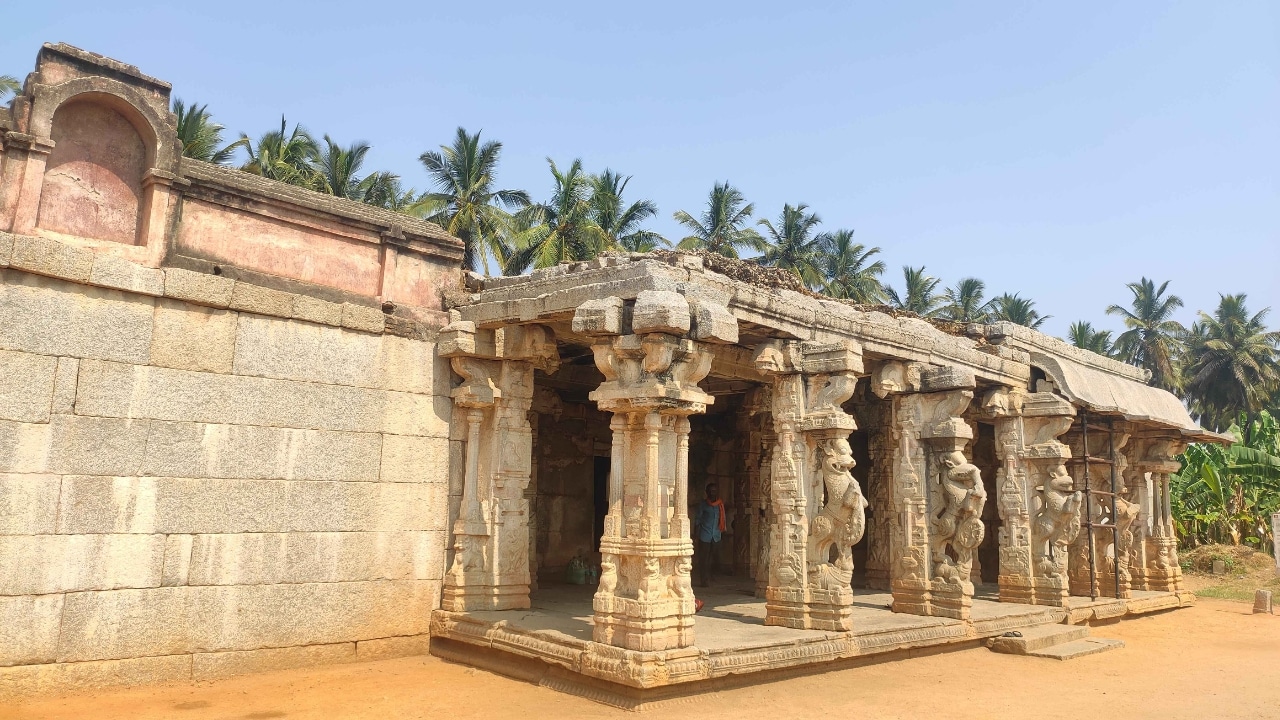
Vishnu Dashavatara Bas-relief Sculptures
To the east of Kotilinga, along the banks of the Tungabhadra River, stand massive steep boulders adorned with intricate carvings depicting various forms of Vishnu. These three distinct boulders feature different sculptures: the northern boulder showcases Dashavatara depictions, the central boulder presents 24 manifestations of Vishnu, each labeled with its name, and the southern boulder features bas-reliefs of Vittala, Vishnu, Narasimha, and a dramatic portrayal of Ugra Narasimha battling Hiranyakashipu. These carvings highlight the significance of Puranic mythology during the Vijayanagara period.
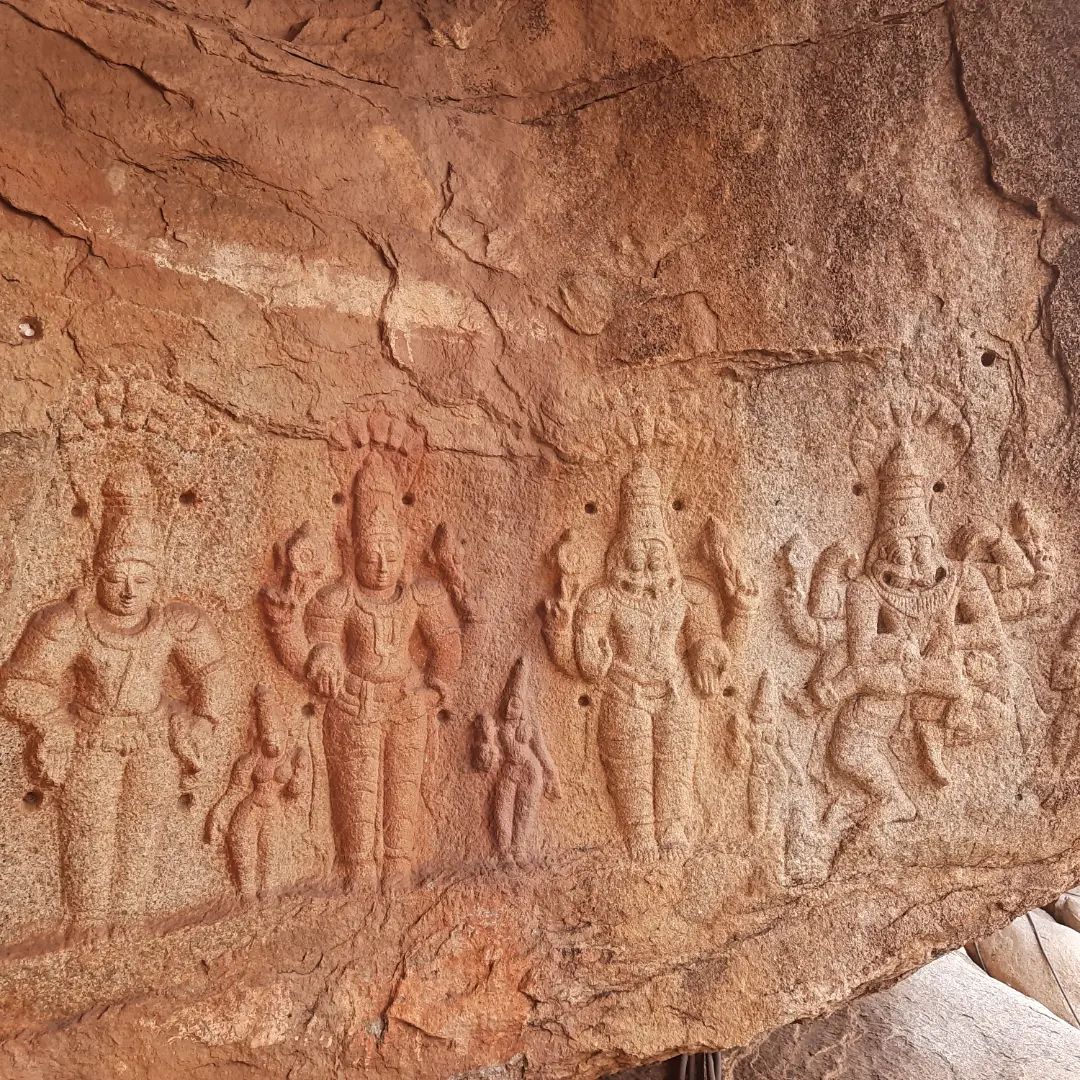
Double-Storeyed Mandapa
The double-storeyed mandapa, or dwaramandapa, is a grand entrance structure built on a massive stone platform along the banks of the Tungabhadra River, southwest of the Vittala Temple. Dating back to the 15th or 16th century C.E., it served as a gateway to Hampi through the Vittala Temple. Similar structures can be found in the Narasimha and Hemakuta Temple complexes. Small shrines on either side are believed to have been dedicated to Ganesha and Anjaneya. To the north of this mandapa, one can find temples, mandapas, tanks, and the iconic King’s Balance.
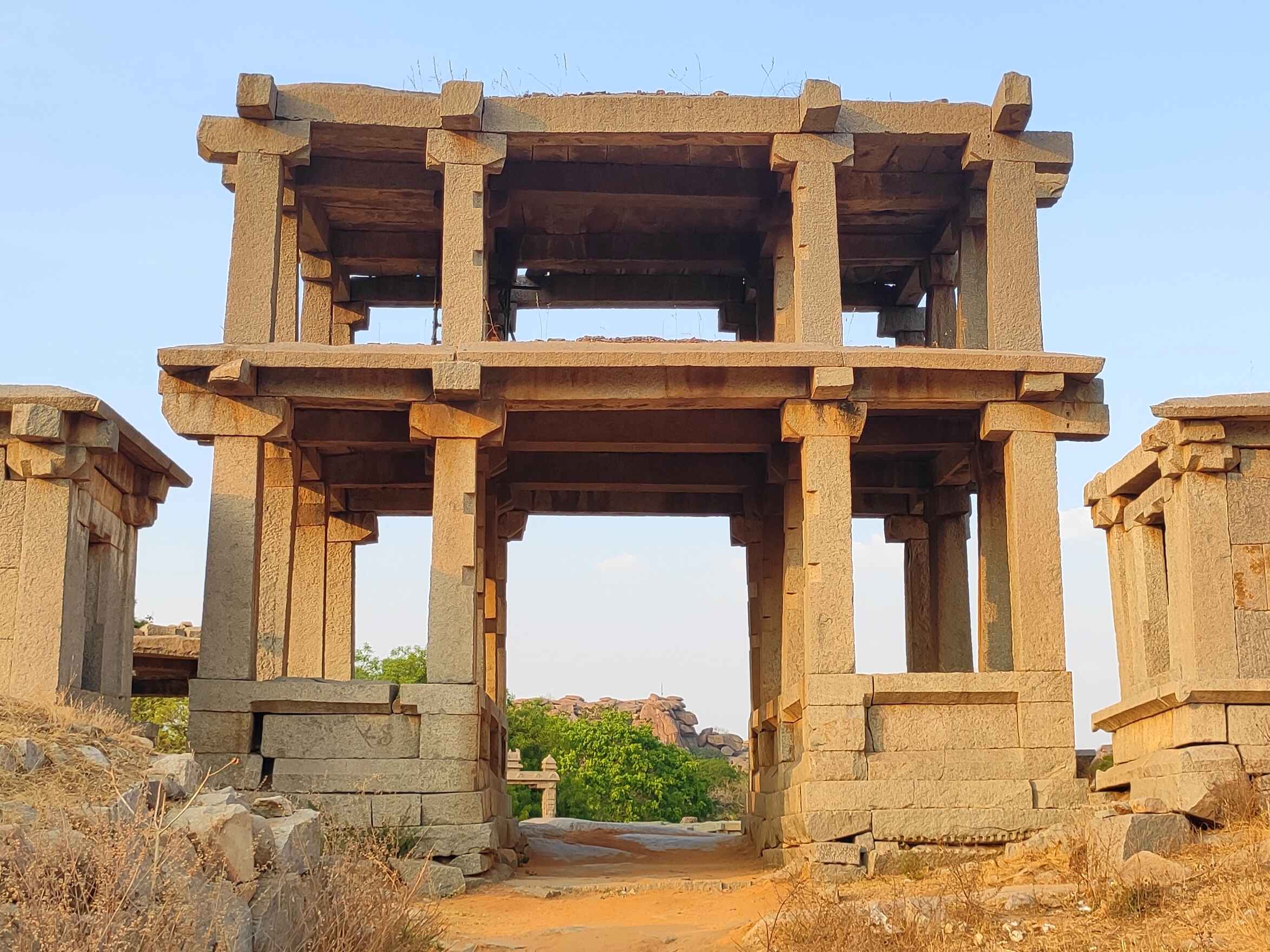
References:-
References from the Following Sources;